Welcome to the Yodo1 Blog
Bringing you the latest news and updates from Yodo1, the mobile gaming industry, and work-from-anywhere culture
Publishing

China Game Licensing is Back: Don’t Miss the Boat!
08.05.2023
•
5 mins read
China Game Licensing is Back: Don’t Miss the Boat!
As the world's largest gaming market, China generates billions in revenue annually. Yet, the 2018 game licensing freeze left developers struggling to break in. Things are changing. As the gates begin to swing open, a sea of opportunities awaits those ready to take full advantage of this newly-accessible blue ocean. Get ready to explore the latest developments and learn how you can be the first in line to reach Chinese gamers eager to play your games.
The key to entering China: ISBN licenses
Entering the Chinese gaming market requires obtaining an ISBN license. In 2018, a game licensing freeze significantly affected the plans of developers and publishers alike (including some of ours). Things started changing in 2021 and 2022, with over 3,500 games receiving licenses, primarily benefiting local Chinese developers.
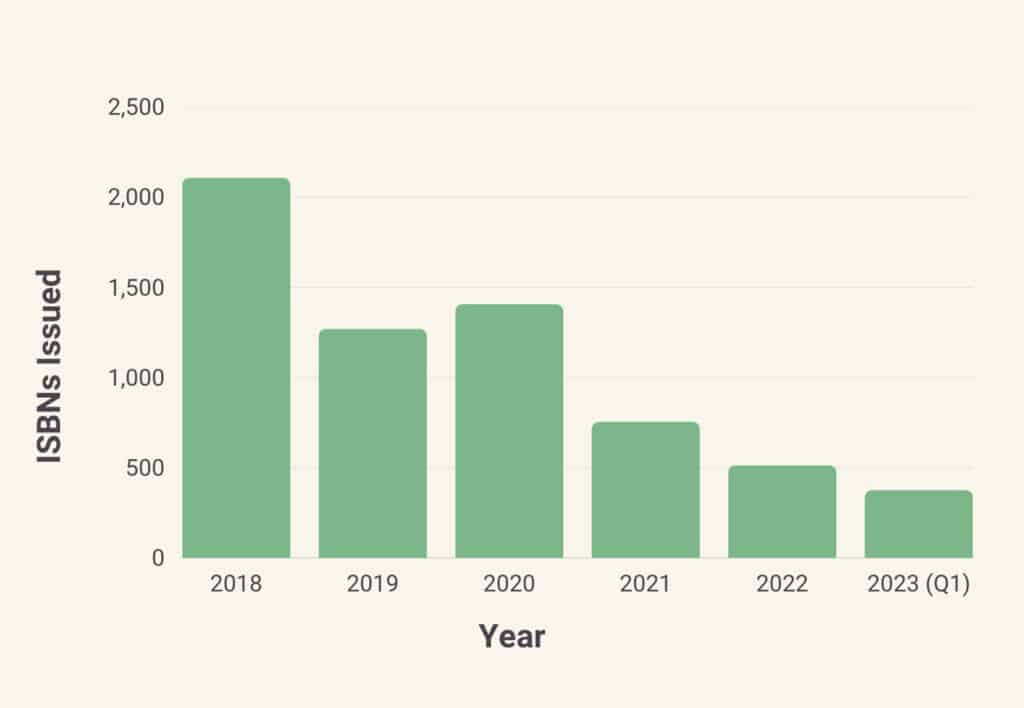
Enter 2023, which saw a resurgence in foreign game licensing that included two approval batches within just three months—a stark contrast to the previous pace of one batch per year. This shift has paved the way for a more favorable environment for developers and publishers, suggesting that we are looking at a new era in access to Chinese gamers. As a publisher with over ten years of experience publishing games in China, Yodo1 has been monitoring these changes closely, and one thing has become clear: The time to act is now.

Riding the wave
With over 1.5 billion players worldwide and major success publishing hit games like Rodeo Stampede and Transformers Earth Wars to the China market, we feel well-positioned to help you ride this wave and succeed in the world's largest gaming market. Case in point: Yodo1 is helping Western game developers like Smart Project GmbH thrive in China’s ever-changing regulatory environment. We recently acquired an ISBN for their casual puzzle game "5 Differences," which earned its license among the first 27 foreign games this year. But we didn’t stop there. Given that Yodo’s expertise spans localization, marketing, and distribution within the complex Chinese app store landscape where major platforms like Google Play do not operate, we are now collaborating with the Smart Project team to help them prepare for a successful launch in the world’s biggest gaming market.
If your game has a unique selling point with over US$5 million in annual revenue globally and you are looking to unlock one of the biggest untapped mobile gaming markets in the world, partnering with Yodo1 could be your best path to next-level growth.
The future is bright
The unfreezing of game licensing in China has opened the growth potential floodgates. Put simply—the TAM is huge, and it’s open for business. But that doesn’t mean the waters are easy to navigate—that’s what we’re here for. With a partner like Yodo1 Games helping guide your game through the choppy waters of regulation, potential policy changes, and complex app store ecosystems, you can look forward to a bright future in the world's largest gaming market. So, what are you waiting for? Let's join forces and conquer the gaming world together!
To submit your game for consideration by our publishing team, click the button below.
Latest Blog Posts
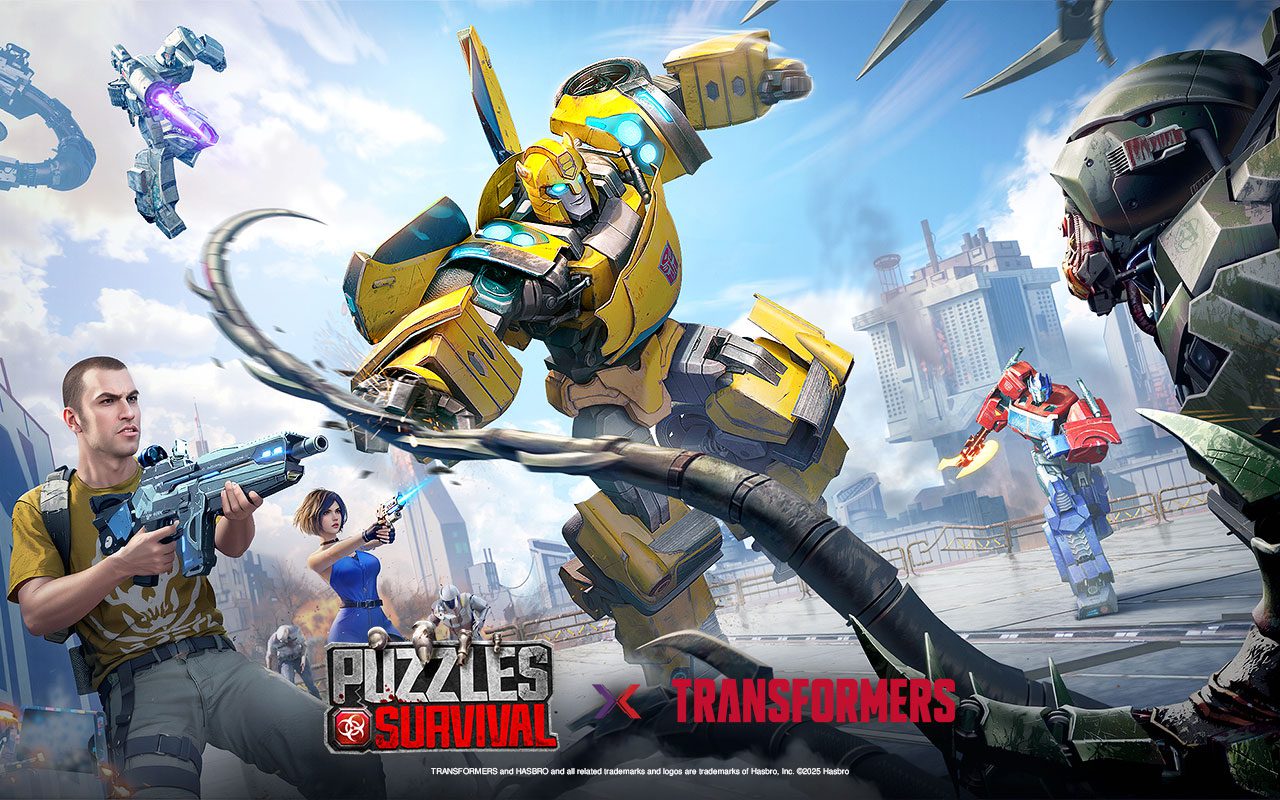

Bumblebee joins the battle for a second Puzzles & Survival x Transformers event
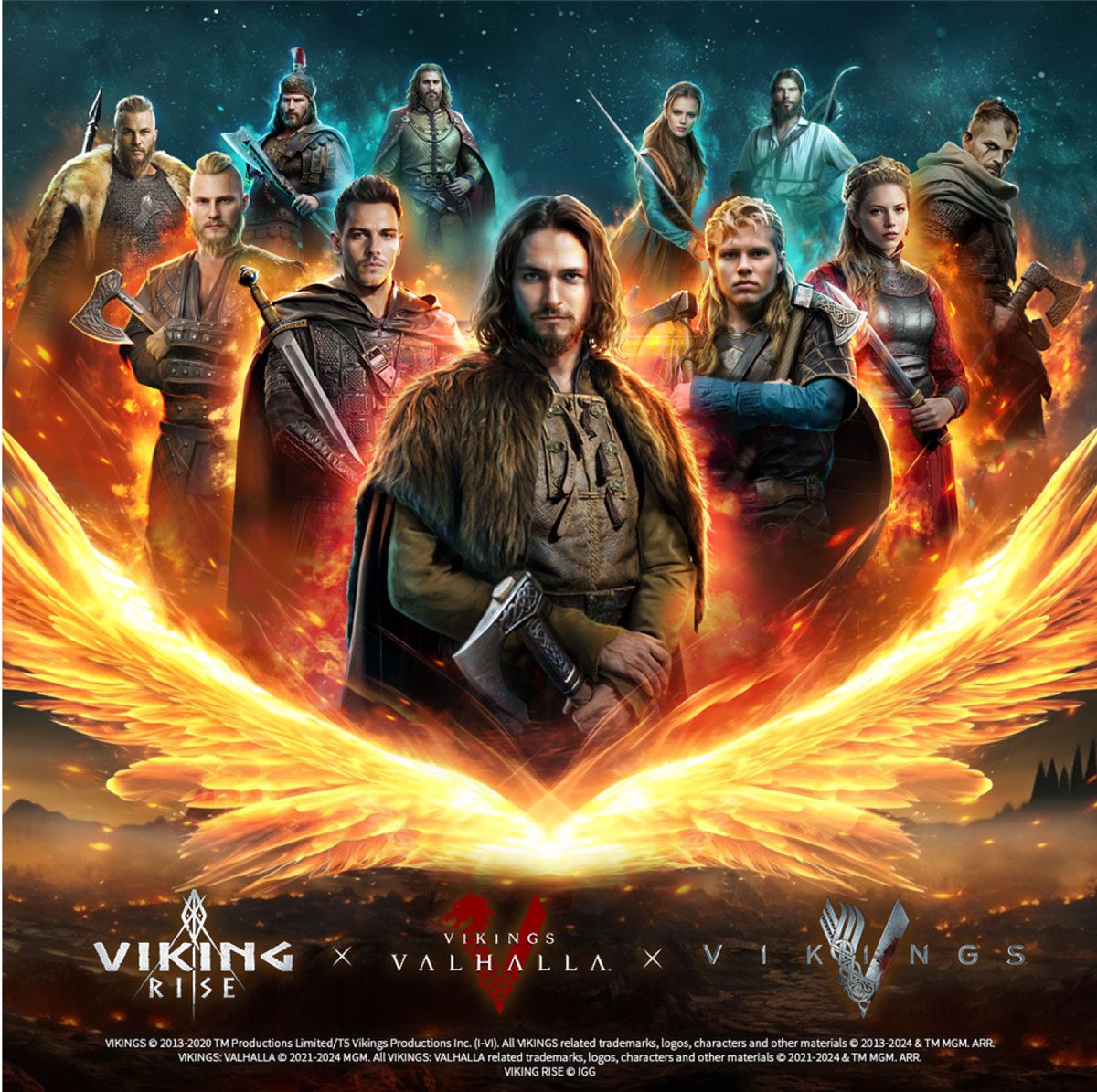

Viking Rise x Vikings: Valhalla Event 4 – The Grand Finale of an Epic IP Saga
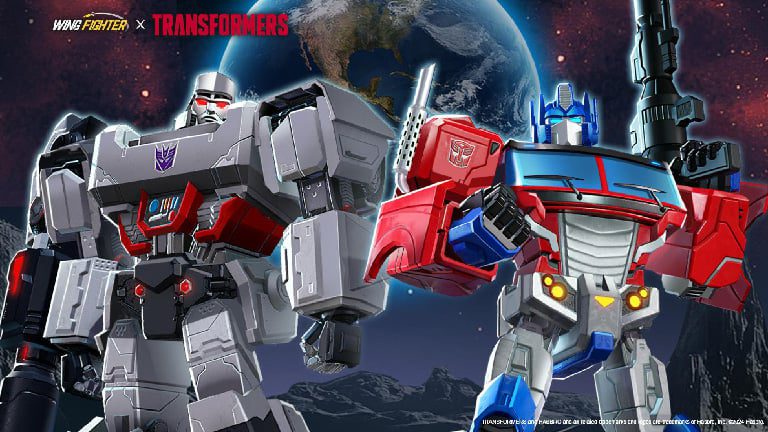

Wing Fighter x TRANSFORMERS – A Battle for the Ages!
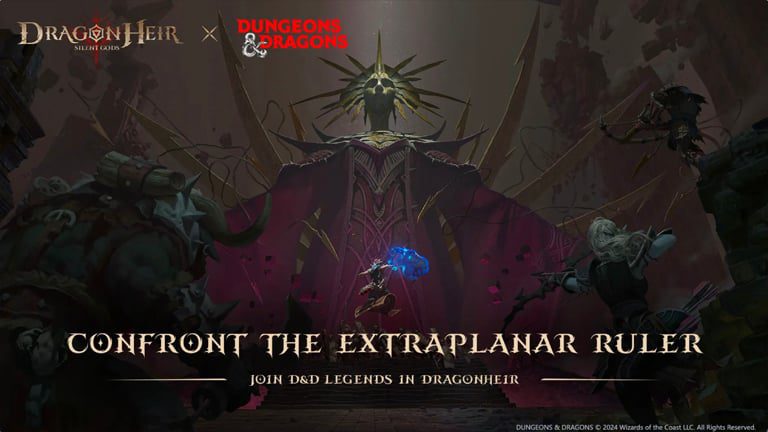

Dragonheir: Silent Gods x Dungeons & Dragons – Enter the Third Phase of Epic Collaboration!
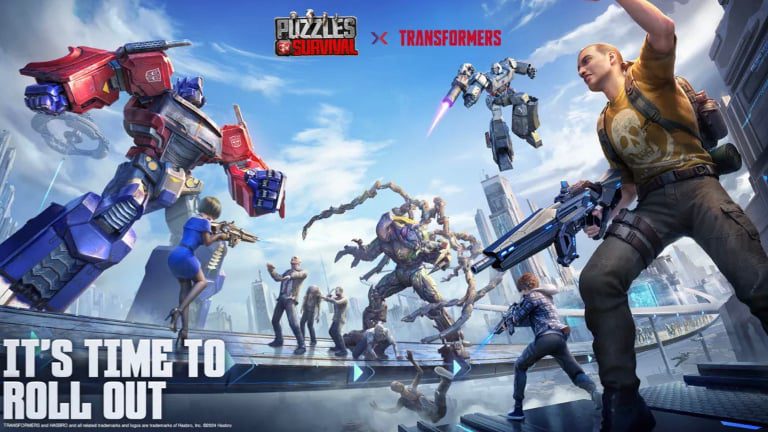

TRANSFORMERS bots and Puzzles & Survival Game Unite to Combat a Massive Invasion!


Yodo1 Gathers China’s Top Mobile Gaming Leaders to Explore Global Brand Partnerships in 2025
Game Growth

Building Mobile Games for All: Unleashing the Power of Inclusion
03.05.2023
•
5 mins read
Building Mobile Games for All: Unleashing the Power of Inclusion
Andrew Tan, Game Community Manager | Yodo1
The gaming industry is undergoing a seismic shift as female gamers increasingly become a force to be reckoned with. In fact, the Entertainment Software Association (ESA) reported that in 2021, female gamers represented over 40% of US gamers. That's right—and what’s more, mobile gaming has been particularly alluring to female players, attracting 55% of this demographic in the US and a whopping 70% in Europe.
As a mobile game developer, are you fully capitalizing on this expanding market, or are you missing out on your game's full potential?
The challenges faced by female gamers
While some genres like first-person shooters remain predominantly male, others, like RPGs and adventure games, tend to have a more balanced gender representation, thanks in part to well-developed social systems that appeal to female gamers.
But let's not sugarcoat it: the dark side of online gaming is very real. Female gamers often face harassment and bullying, particularly when their gender is revealed through voice chat.
This has driven many women to avoid voice communication, and even to steer clear of playing social games altogether. A 2019 qualitative study exposed the hostility, invisibility, and objectification experienced by female gamers, who often hid their gender identity to avoid harassment.
Let's face it; if the social aspect of a game is a significant part of its appeal, but the experience is immediately soured by harassment, it's no wonder these players don't stick around.

Strategies for building a supportive community
To foster a more inclusive and welcoming gaming environment, developers must be savvy about their game's genre and its natural player base. Laying down rules and establishing moderation systems to maintain a respectful environment is key. Developers can create a safer gaming experience by moderating social interactions, implementing clear rules against harassment, and enforcing these rules with temporary or permanent bans as needed.
Think about tapping into your player community by introducing a scoring system to assess flagged content severity and inviting reliable players to join the moderation team. Providing player moderators with the right tools to identify and report issues is a smart strategy. Make it loud and clear to your community that such behavior isn't tolerated, and back it up with solid action and enforcement—that's how you make a lasting impact.
Also worth considering: positive reinforcement and community settings are just as crucial as clear boundaries and rules. Riot Games, the developer of League of Legends, instituted measures like opt-in chat and an honor system, both of which decreased negativity significantly. A safer gaming environment benefits not only female gamers but all players, resulting in increased player retention and a more positive overall gaming experience.
Appealing to female gamers: best practices
To tap into the incredible potential of the female gaming market, developers need to think outside the box and cater to their unique preferences. Here are some best practices to capture their attention and keep them coming back for more:
- Understand genre preferences
- Understanding how genre preferences vary between male and female gamers is crucial. Male gamers often lean towards high-intensity games with crucial reaction times, while female gamers are more likely to favor puzzle and adventure games. RPGs, on the other hand, generally attract a balanced gender representation. Consider these preferences when designing your game.
- Build a strong community
- This was covered above, but remember that a solid community should feel safe for everyone.
- Add customization and engagement
- Interactive elements that allow players to invest time outside the core game loop can be particularly appealing to female gamers. Offer robust character creation, item stores, glamor elements, limited-time skins, a housing mechanic (somebody stop me) to provide more opportunities for personalization and self-expression.
- Prioritize diversity
- A diverse cast of characters can resonate with a broader demographic of players. Strive for representation across gender, race, and culture to create a more inclusive gaming experience. That said, diversity alone isn't enough—a game must also have good storytelling and solid gameplay to succeed.
- Emphasize compelling storytelling
- The success of games like The Last of Us highlights the importance of captivating narratives that keep players engaged. It goes without saying that some games don’t need story elements, but if your game has a story…make it a good one!

Via Playstation
Successful examples: Final Fantasy and beyond
Final Fantasy XIV, an MMORPG with a significant female player base, has succeeded in creating and nurturing a diverse and inclusive community. The game also offers extensive character customization, detailed outfits, player housing, and a diverse cast of main characters. As outlined above, providing more character customization options and adding features beyond the primary game mechanic are great ways to help your game appeal to a wider audience.

Via Reddit
In other genres, Rodeo Stampede exemplifies how two broad mechanics (zoo and endless runner) work together in a game, increasing its appeal to more players. Fire Emblem, a turn-based strategy game with a more female-based audience, contains interesting social systems like marriage and character interactions. Puzzle games like Candy Crush are also popular among female players, possibly due to a lack of time-sensitive reaction-based mechanics. Additionally, hit games with female leads such as Tomb Raider, Metroid, and the Horizon series clearly demonstrate the appeal of female representation in games when done right.
The bottom line: Don't miss out on female gamers
To tap into the female gaming market, mobile game developers must understand and cater to the unique needs and preferences of female gamers. By addressing the challenges faced by this demographic and implementing best practices for creating inclusive and safe gaming environments, developers can appeal to a wider audience and create a more positive gaming experience for all players.
Ultimately, designing games that resonate with a diverse array of players, including women, isn't just a matter of social responsibility—it's a savvy business strategy. So, embrace the shift in the gaming landscape and seize the opportunity to unlock the immense potential of the female gaming market.
Latest Blog Posts


Bumblebee joins the battle for a second Puzzles & Survival x Transformers event


Viking Rise x Vikings: Valhalla Event 4 – The Grand Finale of an Epic IP Saga


Wing Fighter x TRANSFORMERS – A Battle for the Ages!


Dragonheir: Silent Gods x Dungeons & Dragons – Enter the Third Phase of Epic Collaboration!


TRANSFORMERS bots and Puzzles & Survival Game Unite to Combat a Massive Invasion!


Yodo1 Gathers China’s Top Mobile Gaming Leaders to Explore Global Brand Partnerships in 2025
Game Growth
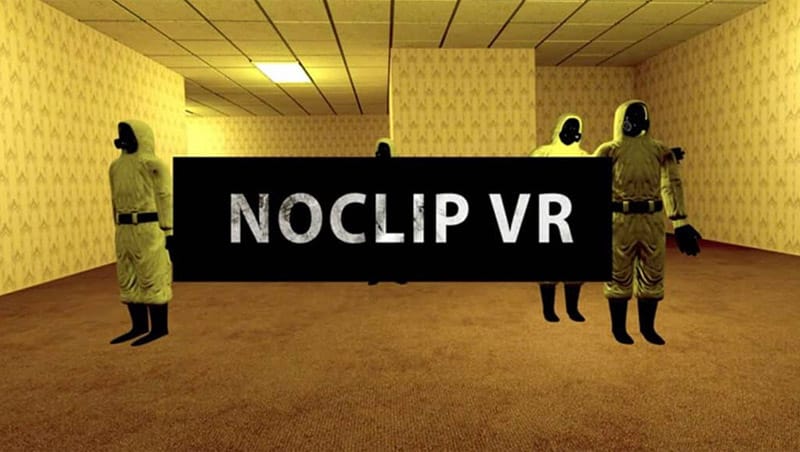
Going Viral in the Mobile Gaming World: Strategies for Long-Term Success
11.04.2023
•
5 mins read
Going Viral in the Mobile Gaming World: Strategies for Long-Term Success
As one of the fastest-growing entertainment sectors, the mobile gaming industry continues to see massive, exponential growth for both established game studios and indie developers. As a result, though, there are now millions of games available in app stores, making it more of a challenge to stand out from the crowd and create a viral hit that achieves long-term success - having a clever idea is no longer enough.
Today we’re going to talk about what developers can do to increase their chances of creating a viral hit game, and, if you should hit that lucky jackpot, how best to leverage success to achieve long-term growth and staying power.
Case Study: Backrooms - from meme to game
An excellent example of viral success is Backrooms, a mobile game by Indian developer Sibi Chakravarthy, based on a popular urban legend meme that originated on the imageboard 4chan before gaining notoriety on Reddit. From there it morphed into a fun, popular trope that developers built games around - an alternate reality consisting of endless, poorly-lit rooms inhabited by entities that may or may not be hostile to humans.
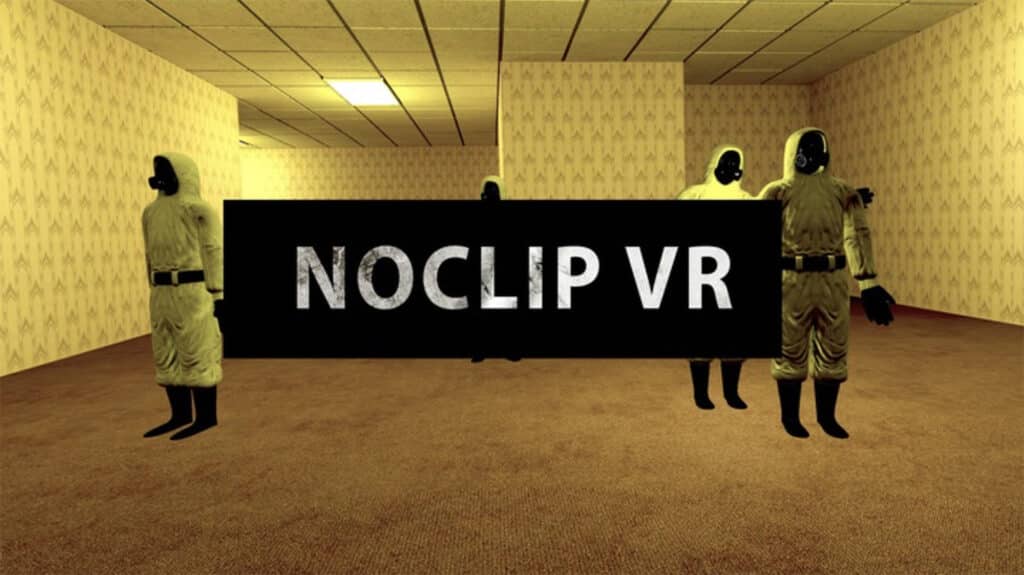
Via Oculus
In Sibi’s game, players explore an endless maze of rooms, avoiding dangerous entities in search of the exit. While the game is not directly tied to the original Backrooms lore, it draws heavily from its themes and aesthetics. Initially developed for Oculus (VR), the game gained popularity on TikTok as enthusiastic players shared their experiences and helped to spread the word. With this clear indicator of potential in mind, Chakravarthy created a version of Backrooms for mobile, which was soon featured on the app store in Saudi Arabia, attracting an even wider audience.
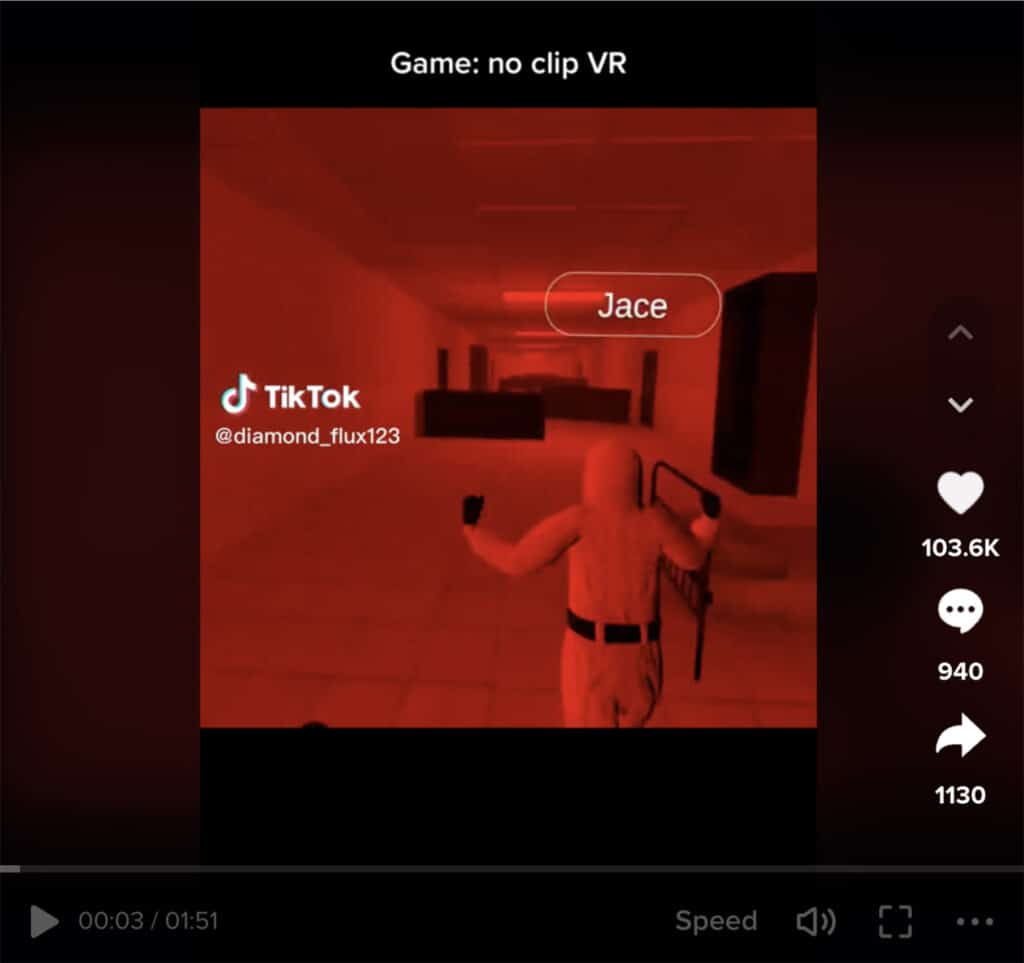
Via TikTok
Increase your chances of viral success
What did players love about Backrooms and what lessons can we glean from this case about achieving viral success? As mobile game publishers with over 10 years and 1.5 billion players under our belts, a few fundamentals are clear. While it goes without saying that implementing these elements cannot guarantee success, getting the basics right can significantly increase the chances of achieving an organic viral boost. Let’s explore.
- Multiplayer games have a strong social appeal: as people play together, they love to share the experience with other gamers, essentially free advertising! The mega-hit Among Us achieved its “overnight success” this way, in part.
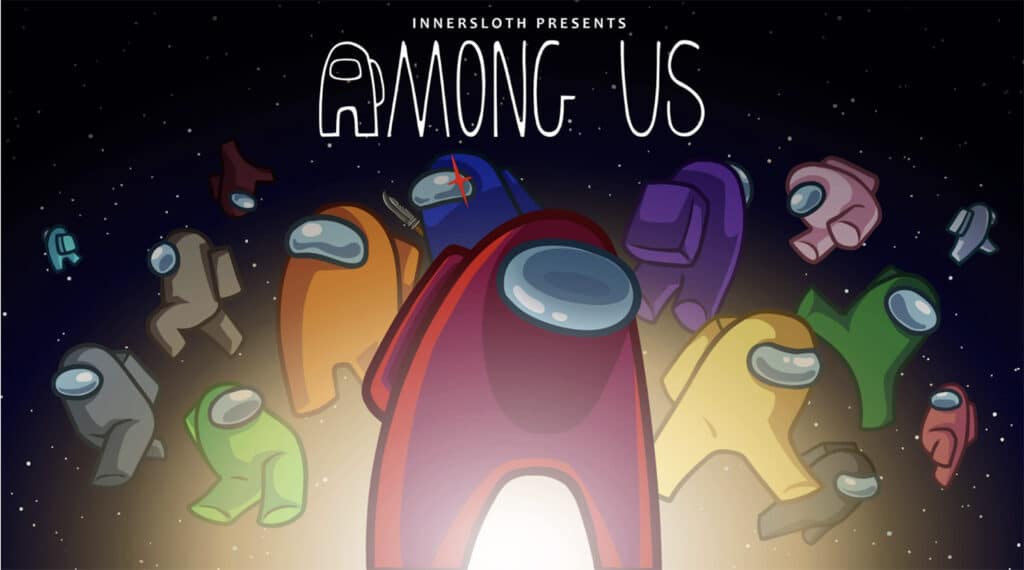
Via Epic Games
Compatibility across devices and platforms: How people play games varies from region to region, and across demographics. The more people are able to access your game on their device of choice, the more you’re expanding your potential reach.
Solid gameplay mechanics: This is key. Something simple that works well is far better than a glossy, error-filled gaming experience.
Social media optimization: While it’s important to be active on social media yourself, building features that lend to shareability, particularly on fast-paced platforms like Tiktok, is a critical component of any viral success. Create opportunities for shareable moments. A good example of this is how players can easily share screenshots of new animals in Rodeo Stampede.
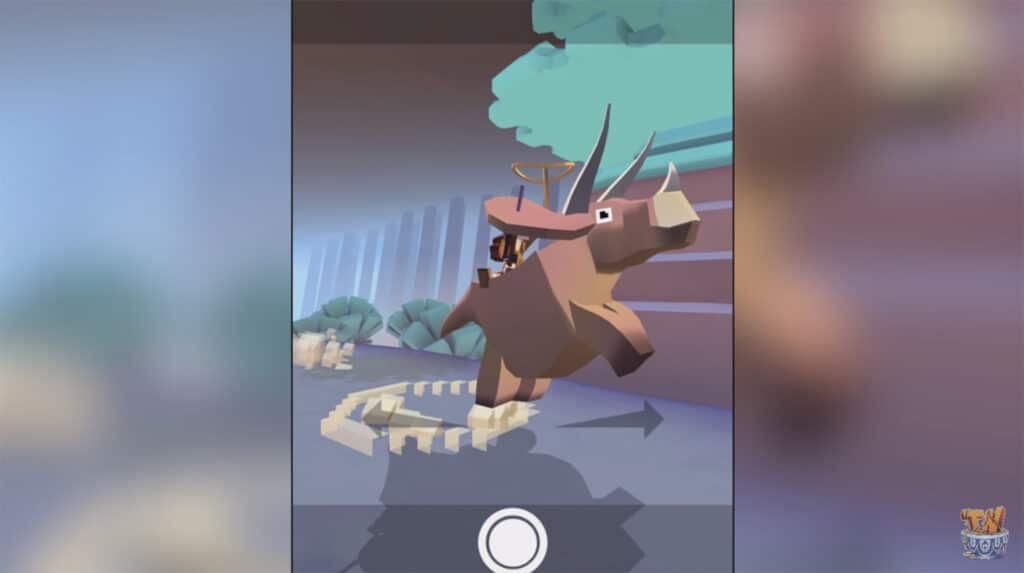
Via Thinknoodles
Insight: The key to achieving viral success is not about following a set of guaranteed steps. Rather, it's in realizing that viral games aren't accidents, but share key elements that increase their chances of taking off. These elements amount to algorithm velcro.
Capitalizing on viral success
So you’ve followed these steps, and now there is a solid core of players who love your game and are telling others about it. What next? Here are some ways to build on that in order to achieve the sustained success that keeps your game at the top of the charts.
- Players are more likely to stick with your game when there's regular, fresh content coming out. Build a pipeline of content releases (which you can post about and discuss in your community–see below); give your faithful players a reason to keep coming back.
- Quickly deal with crashes and ANRs; it goes without saying that monitoring and reacting in real-time is key. Make your game as stable as possible so that when that influx of players comes, you’re ready for them.
- Build a community where players can build a meaningful connection to the game, connect with other players, and even help shape the game’s future direction. If done currently, this leads to loyal fans who will be your biggest cheerleaders.
- Stay on top of your store reviews. Feedback from players is vital to help you improve and localize your game for various regions. Feedback of any kind—positive or negative—is an amazing way to learn what works and what doesn’t and is key to iterating the game and producing content that will help it to grow and improve over time.
- If one of your games gains traction and attention, capitalize on it to pull traffic via your community to other, similar games in your portfolio, whether sequels or games in the same genre.
- Finally, be aware of and adapt to regional differences, particularly in regard to monetization strategies when a viral success results in a large influx of users from a specific region. It’s vital to strike the balance between in-app purchases (IAP) and in-app advertising (IAA), as those factors can vary widely. So, do your research to find the right monetization solution or partner that can help you configure and optimize the best networks for each ad unit in order to get solid eCPM and performance.
Insight: Sustained long-term growth doesn't have shortcuts. Whether your game goes viral or not, putting in the right effort with consistency is the foundation of any successful mobile game.
Scaling up growth
To scale up your game successfully, you must develop a deep understanding of your players over time. Diving into your analytics and understanding your players more deeply can lead to tremendous insights: where are you trending and why? Gaining this kind of awareness of player behavior patterns and demographics will uncover paths for continued growth.
And of course, ASO and UA will be key as you continue scaling up.
Check out our video on increasing your downloads with ASO:
https://youtu.be/YlG4pPeWDl8
Not budgeting enough for UA early on can also hamper growth. You might not think you can afford it, but it can certainly be well worth investing in and testing UA, even if you have to start with a smaller budget. UA testing, ROI aside, will help you understand how to scale up your game and what you should be spending the most time and effort on; it’s like your R&D department.
Insight: As your game grows, you will gain an ever-more precise (data-driven) understanding of your players, and an intuition for what works and what doesn’t. That means fully leveraging growth to generate the insights that will unlock your next stage of growth.
Give yourself the best chance to succeed
Success doesn't come with a guaranteed blueprint, but diving headfirst into the strategies we’ve covered will help tip the scales in your favor and prepare you to ride the wave of momentum when your game takes off.
Also remember that there are no shortcuts, particularly when it comes to growth over the long term. Developing a curious and iterative mindset will drive you to make data-driven decisions that resonate with your existing players, fueling your next level of growth.
Learn more about how Yodo1 helps game developers at all stages grow their games here.
Latest Blog Posts


Bumblebee joins the battle for a second Puzzles & Survival x Transformers event


Viking Rise x Vikings: Valhalla Event 4 – The Grand Finale of an Epic IP Saga


Wing Fighter x TRANSFORMERS – A Battle for the Ages!


Dragonheir: Silent Gods x Dungeons & Dragons – Enter the Third Phase of Epic Collaboration!


TRANSFORMERS bots and Puzzles & Survival Game Unite to Combat a Massive Invasion!


Yodo1 Gathers China’s Top Mobile Gaming Leaders to Explore Global Brand Partnerships in 2025
IP Licensing
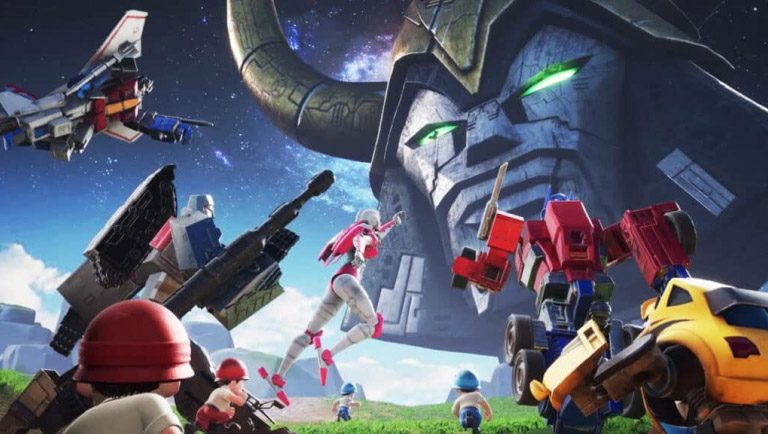
How to Find the Perfect IP For Your Game Crossover
31.03.2023
•
5 mins read
How to Find the Perfect IP For Your Game Crossover
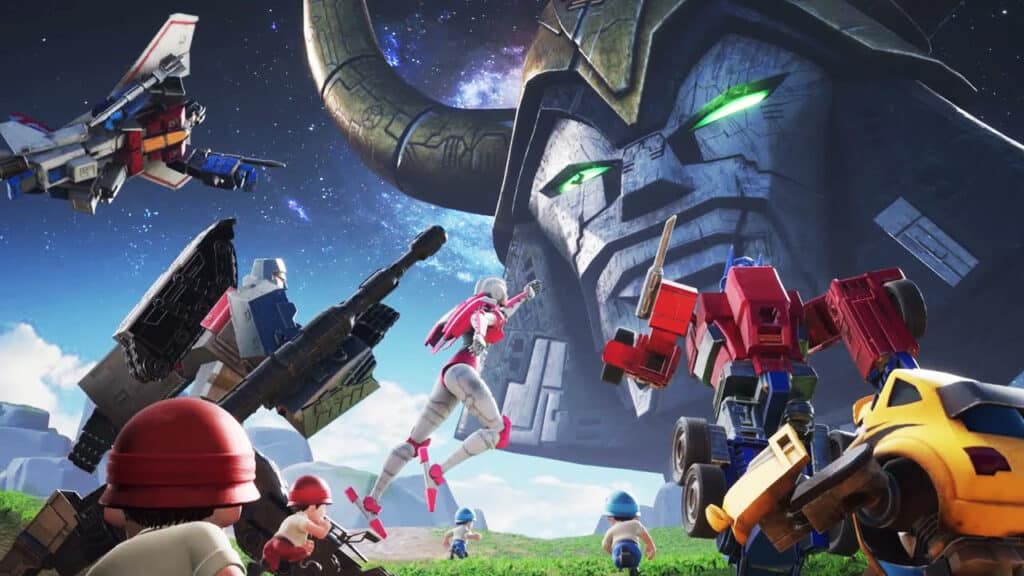
The gaming industry is one of the fastest-growing segments in entertainment, growing by 26% between 2019 and 2021, and with no signs of slowing down, it continues to provide nearly unlimited scope and opportunity.
Limited-time IP collaborations have become increasingly popular in the industry, and for good reason: they’re an amazing way to reach new players and generate buzz around your game.
As your games continue to grow, you’re probably wondering, what comes next? How can you take your growth to the next level, expand your player base, and maximize your revenue? As experts in limited-time IP collaborations, we have a birds-eye view of which IPs work best with which games, and the factors that lead to the most successful collaborations.
Let’s look at how these exclusive, short-term collaborations between games and films—we’re including TV shows and animation in this catchall term—benefit each side.
Setting the stage for a win-win-win
Suppose a superhero movie wants to generate buzz around its upcoming film with the ultimate goal of getting more people in the theater. A limited-time collaboration with a game that has clear audience overlap might be just the thing; a win for the game because existing players love exclusive content, while the film’s high-profile IP can bring a new cohort of players into the game. Bonus, a subset of players will connect the dots and realize there's a movie out! This is a true win-win scenario, perhaps best demonstrated by Fortnite, who often drop exclusive skins from an IP collaboration just before a new movie to TV series release, as they did for the release of John Wick 3: Parabellum in 2019—just one among their many successful events.

Image Credit: Early Game
How entertainment IPs help games
By bringing well-known IPs with millions of fans to the world of a game, developers and studios can tap into a pre-existing fan base, potentially increasing their game's popularity and profitability. Additionally, if a film is involved in the collaboration and has notable talent, such as A-list celebrities, this can generate huge exposure and become a major driver of traffic for the game.
By associating with a successful film franchise, developers can gain significant credibility and enhance their reputation in the industry, which can lead to not only an immediate revenue boost but also increased opportunities for future projects.
Insight: Finding mutually advantageous collaborations can improve your negotiating position and your bottom line.
How games help entertainment IPs:
Practically speaking, games can be developed and released much more quickly than films, thus allowing filmmakers to promote new content and generate excitement among fans before the film's release.
Other pluses include increased audience engagement, expanded reach, and efficient, targeted content promotion giving the IP a chance to experiment and try out new things with a specific demographic. And of course, games often attract a new audience that may not have been exposed to the film, expanding its reach and popularity.
Insight: Collaborations between films and games offer numerous, tangible benefits to both parties, including increased exposure, credibility, and financial success. The trick is finding the right match.
Finding the right IP is easier said than done
To reap these rewards, however, it’s crucial that game studios do their homework and invest in IPs that match their game’s demographic in order to get the best possible ROI. Understanding your audience will give you insight into the IPs that may work for your game. If you get this wrong, you could be bringing players in who stop playing immediately. If there’s a fundamental mismatch, it’ll be a bad investment.
Let’s explore the current landscape of entertainment IPs in games, to uncover insights and trends to help you reach new plates and continue scaling your game.
Live-action vs animation
Integrations with live-action shows or movies—such as The Walking Dead in Monster Legends and Puzzles & Survival—have obvious big pluses, as they feature famous celebrities that are recognized and loved by many. Harnessing this star power has resulted in some fabulous limited-time partnerships, like the Fortnite x Dune collab in 2021 that brought Paul Atreides and Chani into the game.
In collaborations involving animation, the negotiation process is generally more straightforward, and everything is also much simpler from a production and approval standpoint. Animated films and shows have more assets ready to be used in games, and of course, likenesses are not an issue. The limited-time collaboration between One Punch Man and Overwatch, which started last week and will continue through April 6, is a great example of a crossover generating a lot of buzz in real-time.
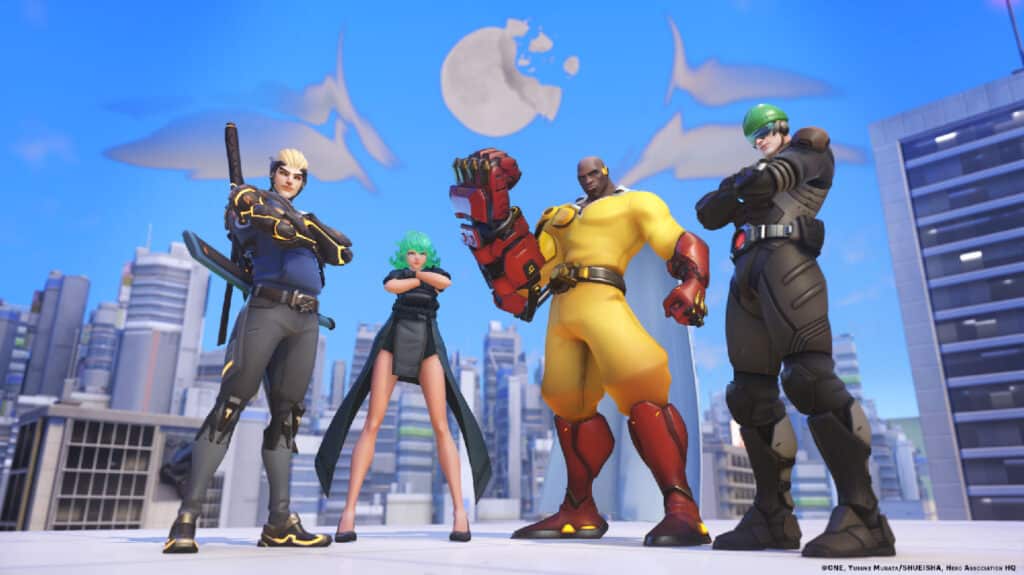
Image Credit: Blizzard
Insight: Live-action and animation each come with their advantages. Understanding these in the context of your game and players can make all the difference when choosing an IP to collaborate with.
Trends by genre
A majority of the most successful examples of IPs in games involve a fantasy (defined broadly) or sci-fi element. Why? Well, these genres often come with a built-in fanbase and, more importantly, expansive, detailed worlds that lend themselves well to game adaptations. Game developers can take advantage of these pre-existing worlds to create an alternative universe or mix up characters from the IP and the game to create new stories and experiences.
Star Wars is a great example: whether it’s a first-person shooter, racing, or even a puzzle game, there’s a vast treasure house of lore to mine, and an audience that is endlessly excited by it.
Sci-fi and fantasy IPs are primarily male-driven, another point in their favor since, as a group, they are the biggest spenders in mobile games. Overall, the sky is the limit: characters from action films like Top Gun and Jurassic World, fantasy franchises like Lord of the Rings, the MCU, Harry Potter, and Avatar, and the robots from Terminator and Transformers, all offer great opportunities for time-limited collaborations with games. This is a case where there are myriad options for overlapping audiences, like the very successful Transformers x Top War crossover.
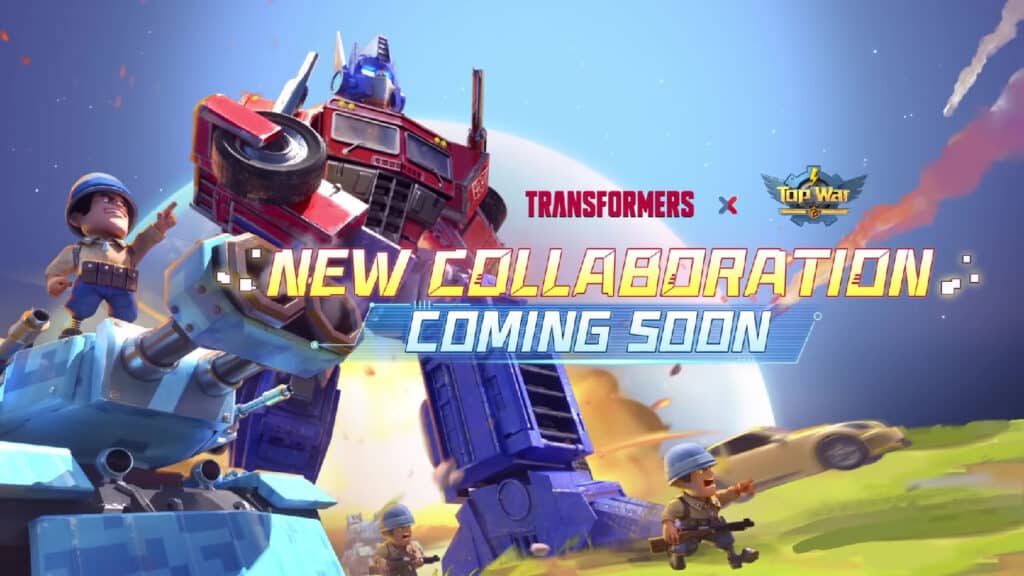
Image Credit: Transformer World
Horror and thriller franchises, also popular among the male gamer demographic, can be highly effective when paired with the right type of game and targeting a specific niche of players. Fans of horror and thriller franchises tend to be very loyal, long-time players who are willing to invest both time and money in games that deliver an immersive and terrifying experience. This dedicated fanbase can create a lucrative opportunity for game developers looking to collaborate with these types of IPs. By tapping into the suspense of horror and thriller franchises, game developers can create games that not only entertain and engage players but also capitalize on the pre-existing popularity of these iconic film genres.
Some IPs, however, regardless of popular appeal, don’t lend themselves as well to collaborations. Can you imagine a first-person shooter based on Titanic? Probably not!
Insight: Generally speaking, the gaming potential of an entertainment IP is a function of its scope and how close it sits to reality. Put simply, sci-fi and fantasy worlds have more possibilities.
Demographic differences
Interestingly, in the puzzle and simulation genres, women players outnumber men by quite a margin, and now make up a significant percentage of RPG and MMO players too. The challenge is that they tend to prefer drama, romance, as well as other more reality-based programming, and these more realistic IPs have proven harder to incorporate into games in a way that feels authentic. Not impossible, but it’s certainly more of a challenge to find a game these genres can sync with.
So what’s the solution for this increasingly strong demographic? Looking outside the confines of IP as just movies, anime, or TV shows to find matches among other brands. Fashion is a fast-growing appeal. For example, dressing characters and avatars in interactive and simulation games can be a clear and attractive path to incorporate a fashion designer label into the game.
Music is another avenue that can be used to target the female demographic effectively; recent successful examples of live, in-game concerts include BLACKPINK in PUBG Mobile and Ariana Grande in Fortnite, to resounding success.
Insight: Different audiences require creativity in matching IP with appealing interests, but thinking outside the box to brands beyond entertainment can open up new avenues for collaborations.
What about younger audiences?
You may have noticed that we haven’t mentioned campaigns targeted at children. In general, these have not proven the ideal market for limited-time IP collaborations. Due to specific restrictions—for good reason—on advertising aimed at children, most games for younger age groups monetize using a subscription model, making it challenging to monetize the IP once in the game, and the ROI is often not worth it.
Harnessing the hype
Some IPs target game collaborations specifically during premiere launches or other new-content drops. This can be more expensive for games but is usually more than worth it due to extra promotion tied in with the huge marketing campaigns the IPs are already taking on.
Licensors will start discussing game collabs for these big launches about a year in advance, so they can sync these up with other facets of their promotional launch campaigns, so plan well ahead. Large IPs tend to have very loyal fanbases, which can lead these brands to be more conservative in their marketing choices. If it’s a real out-of-the-box collaboration, a newer IP is often more flexible and open to something different.
In practice, the standard is for at least four of the IP’s iconic characters to be introduced to the game; usually several are offered free and the others are purchasable. If there’s something else strongly associated with the brand—a vehicle, weapon, or other recognizable items—these are great to incorporate, too. Amazon Prime show The Boys teamed up with PUBG MOBILE for the former’s Season 3 launch by offering, among others, exclusive Homelander, Soldier Boy, and Starlight super suits, weapon skins, and even a one-of-a-kind parachute.
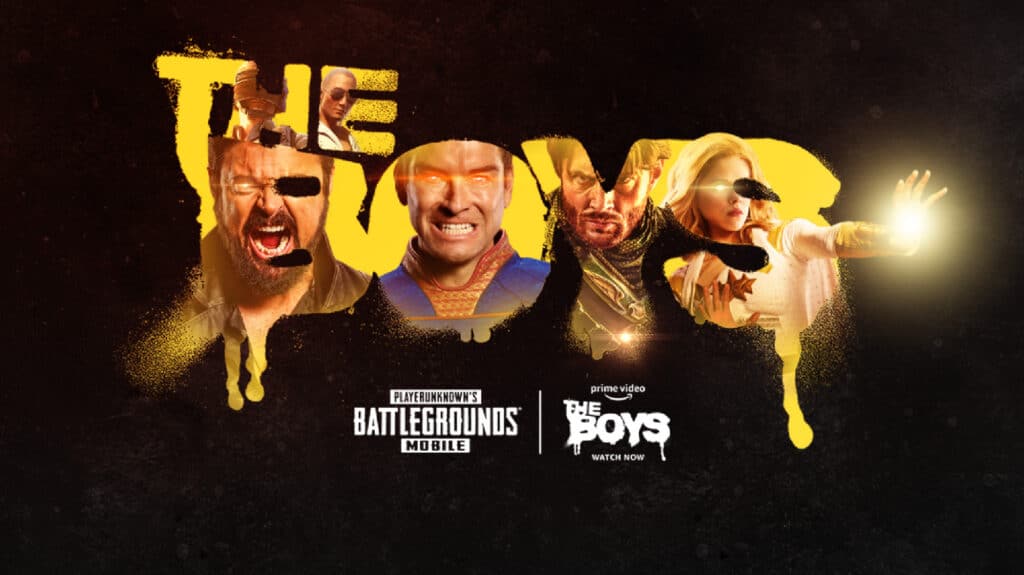
Image Credit: Variety
Whether it’s characters or items, this is where the limited-time angle of the collaboration comes into play: if you’re a fan, it’s now or never for these special items. That’s why they have to be well-selected so that what is offered generates excitement and FOMO among fans.
Insight: Think ahead, plan well, and make sure your audience knows what’s on offer and that it won’t be around for long–leverage FOMO to your advantage.
This sounds like… a lot
If your game is growing steadily but has hit a plateau in terms of players and revenue, or maybe it’s still growing but you want to try something new to attract a new audience and expand revenue further, now is the time to dig in and see if limited-time events are the next step in your growth trajectory and worth the investment.
The goal: increased purchases from existing players who are excited at the new content on offer, and new players who come to the game as fans of the IP. It’s a way to stay relevant if your game has been around for years, or, conversely, a way to put yourself on the map if you haven’t, linking your name with a top IP.
At Yodo1, we’re experienced in creating successful matches between brands and games. We know the ins and outs of licensing details, contracts, and legalities and can help you navigate them—and in many cases, take them off your hands—setting you on the path to a successful pairing. Reach out today to learn how!
Latest Blog Posts


Bumblebee joins the battle for a second Puzzles & Survival x Transformers event


Viking Rise x Vikings: Valhalla Event 4 – The Grand Finale of an Epic IP Saga


Wing Fighter x TRANSFORMERS – A Battle for the Ages!


Dragonheir: Silent Gods x Dungeons & Dragons – Enter the Third Phase of Epic Collaboration!


TRANSFORMERS bots and Puzzles & Survival Game Unite to Combat a Massive Invasion!


Yodo1 Gathers China’s Top Mobile Gaming Leaders to Explore Global Brand Partnerships in 2025
Culture

Yodo1 Stories: Making it Easier for Women to Grow a Career From Anywhere
08.03.2023
•
5 mins read
Yodo1 Stories: Making it Easier for Women to Grow a Career From Anywhere
At Yodo1, we’ve championed the importance of equity and diversity from day one. When we launched over 10 years ago, half of our founding team was women, and all these years later, that fact remains true among our leadership team.
Today, we recognize the success of seven incredible women from across Yodo1—and worldwide—who are making waves in the mobile gaming industry. By diversifying perspectives and taking risks, these inspiring women have achieved remarkable growth and built a life they love through mobile games.
Join us as we share their stories and highlight their incredible accomplishments to celebrate International Women’s Day!
Vivien Zhang, from career launch to business leader, while starting a family
Vivien Zhang joined Yodo1 in an entry-level marketing position in 2012. A few years later, she was leading the Chinese marketing department. As Yodo1 became globally focused, Vivien got the opportunity to reinvent herself as head of a completely new IP licensing business unit launched in 2019 called Brands in Games.
As her career was advancing, Vivien also started a family. From newly-wed to new mom, Yodo1’s Work From Anywhere (WFA) policy has given her the flexibility to spend more quality time with her daughter, travel as a family, and strengthen bonds.
Vivien continues to lead her teams in what is now our fastest-growing business line and she has been a member of Yodo1’s executive management team for over five years.


Vivien, how has Yodo1 empowered you?
Over the past ten years, I have grown professionally and started a family at the same time. As a woman, I feel strongly that Yodo1 always trusts and encourages me to take on new challenges and helps me succeed. I’m given the chance and guidance to try new things and even if I eventually fail in some of them, what I learn in the process is still a great treasure to me. Also, the management and my peers respect my personal life and have supported me when I had to deal with family issues.
What advice would you give to other women who want to advance their careers without sacrificing family life?
In current society, women are under even more pressure than men. We have to take care of the kids and family while also being excellent at work.
My suggestion to you is not to lose yourself in all the daily chores and tasks. Remember, you are the most important person in your life. When at work, do your best so there’s no room for regret. Reserve time for yourself and doing what makes you happy.
Trust me, if you do this and stay positive in everything, you will find your life and work getting better!
Elizabeth Wong, accelerating while relocating
Elizabeth currently lives in Dublin with her 12-year-old daughter. She joined the Yodo1 team in Beijing in 2014 as an accountant and was later based out of Hong Kong. In 2022, she decided to take full advantage of our Work From Anywhere arrangement and relocate to Ireland for her daughter’s studies.
Moving to a different country and time zone is never easy, but it didn’t stop Elizabeth from being promoted from Accounting Lead to leading the entire Finance Team and earning a spot in management for her outstanding work in transforming Yodo1’s finance function.


Elizabeth, how has Yodo1 empowered you?
Yodo1 embraces our mobility through Work From Anywhere. I’m very glad I’ve continued my job while navigating a new hometown. It empowers me and my daughter, as she can pursue her preferred education. With the flexibility to work from anywhere, we’re able to live in an area with better education opportunities that’s more affordable than in other regions of Hong Kong.
What advice would you give women who are thinking about relocating for work?
It certainly takes a great deal of time and effort to blend into a new environment. Being respectful in a new society is important. Be focused and prepared to explore; get ready to experience a bit of a bumpy ride sometimes and, most importantly, have fun!
Marina Espin, Yodo1’s youngest business leader
Marina moved from her hometown of Barcelona to Beijing in 2017 to study Mandarin. In 2019, after being enticed by the gaming industry, Marina started an entry-level position as a Monetization Manager at Yodo1. After less than six months, she led the team, and one year after that, she became the head of Yodo1’s MAS business unit—managing 30+ people and becoming Yodo1’s youngest-ever business leader.
In 2022, Marina moved to a new challenge, becoming Head of Strategic Partnerships for our Publishing and IP Licensing teams. Today, she is fully focused on expanding our global licensing partnerships and Brands in Games collaborations.
She’s also a certified sailor and can even do a headstand!

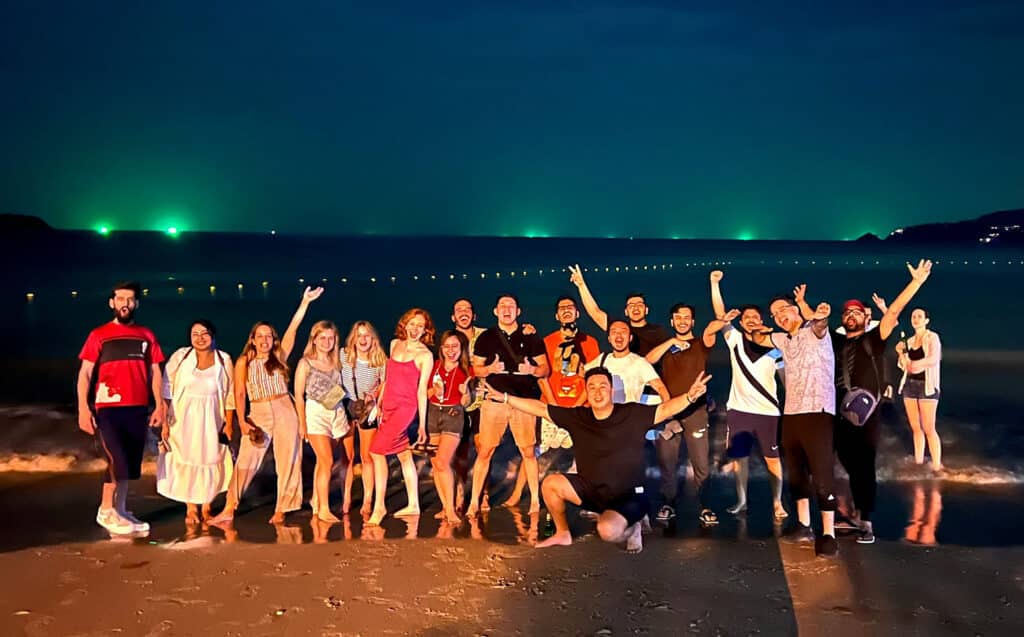
Marina, how has Yodo1 empowered you?
Yodo1 allowed me to grow extremely fast in the past four years, trusting me to do things I had never done before. I got the chance to work in the three main business units, engage with, and learn from many different teams around the company.
Working remotely allowed me to be based in Barcelona but have the freedom to travel often for work and pleasure, planning my working hours in a way that best fits me.
I have also been able to hire great team members from all around the world. Not being limited by a geo-location when building a team is extremely empowering and allowed me to hire the best people for each role.
What advice would you give to women who want to stay physically active and socially connected while advancing their careers in a remote work environment?
If you want to advance quickly without sacrificing your health or social life—especially when working remotely—you need to create the right environment for yourself.
Choosing a place to live where you have friends or at least have the chance to meet people is important, as you're going to spend a lot of time working by yourself, connected to your colleagues online but far away physically.
In my case, using a co-working space really helped, as I got to meet new people and have a more stable routine. It feels like having the perks of an office with the freedom of working remotely.
Lastly, I think it's important to make the effort to meet your colleagues in person once a quarter to strengthen personal connections and engagement with the company.
Flo Alcasas, from freelance writer to HR leader
Flo was never interested in a traditional career path. After high school, she left her home country of the Netherlands to volunteer in Asia while pursuing an online college degree and teaching English on the side. Coincidentally, it was when she started running a blog that she landed her first freelance writing work with Yodo1. After a few months, she was offered a part-time and eventually full-time position in the PR department.
The big leap came when Yodo1 closed its Beijing office and went fully remote. Co-founder and Co-CEO James LaLonde asked Flo if she was interested in leading Yodo1’s new global recruiting efforts. Four months after that, she became the Head of HR—leading recruitment and people operations—and hasn’t looked back since.
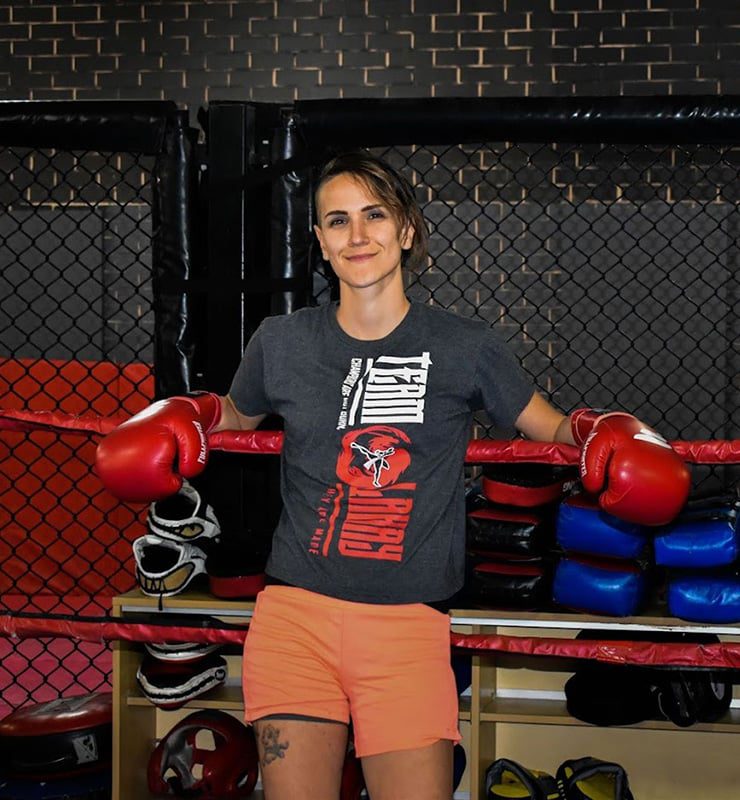
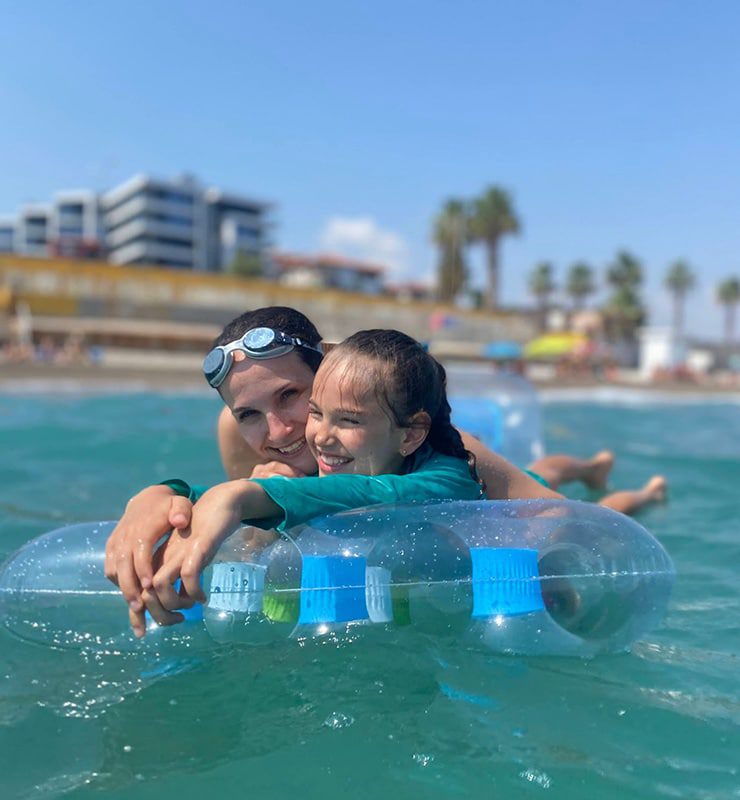
Flo, how has Yodo1 empowered you?
My boss and mentor was quick to see my potential in areas I’d previously never imagined myself working. Along with new opportunities, I got a lot of coaching, on-the-job learning experience, and—most importantly—a lot of trust to try my hand at a new set of challenges.
I’ve never heard of a company that promotes people as quickly as Yodo1. And it’s super empowering to work alongside so many exceptional women leaders!
What advice would you give to freelancers who want to transition to a full-time career?
Whatever job comes your way, don’t take it unless you’re going to give it your best. Freelancers build their careers by establishing a reputation of excellence, whether the assignment is one hour or one year.
Do the research needed, pay attention to detail, double and triple check. Once you are known for delivering at your best on whatever task you’re given, clients will keep coming back and may even want to bring you on full-time if an opportunity opens up.
Winnie Yang, from managing a game to a whole business unit
Winnie joined Yodo1 in 2019 as a project manager in the Publishing department, handling the game production schedule, ensuring quality releases, and managing external communications.
As she gained more experience and demonstrated her capabilities, she was given the opportunity to take on a bigger role within the team. Now, she oversees the entire game production team, operates multiple projects, and helps run the business unit.

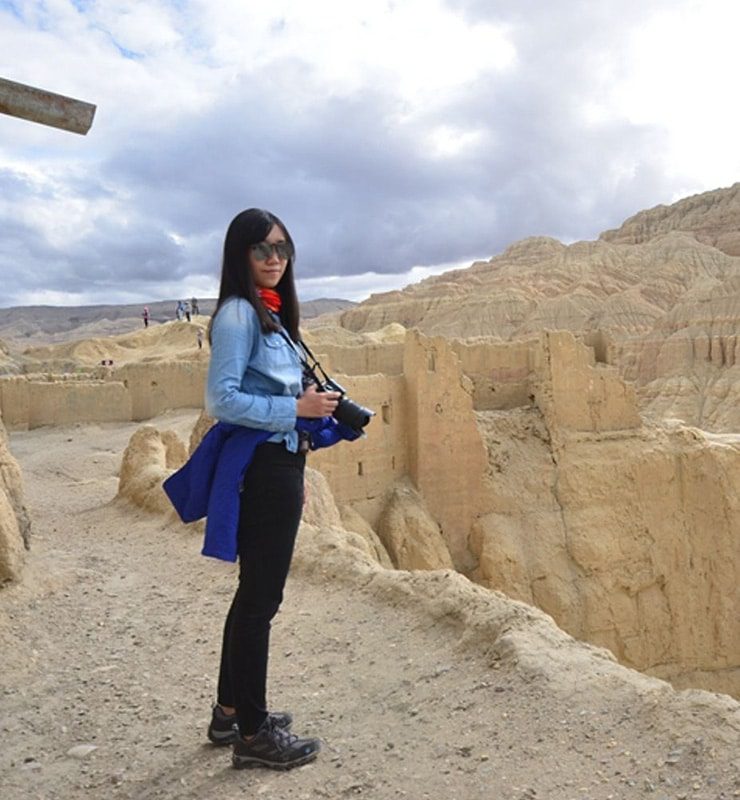
Winnie, how has Yodo1 empowered you?
Yodo1 empowers me by trusting me with increasing responsibilities and providing opportunities for growth and development.
Moving to my new role, I had to start managing people, costs, and strategic direction. One of the biggest challenges I faced was transitioning from a hands-on worker to a more strategic thinker, which required me to learn how to delegate tasks effectively, empower team members to make decisions, and focus on the bigger picture of the business.
Despite the challenges, my work at Yodo1 has been extremely rewarding, allowing me to significantly impact the company. Overall, this role has been an incredible opportunity for growth and development, and I am excited to see where it will take me.
What advice would you give to women wanting to become gaming industry leaders?
I honed leadership skills such as communication, delegation, and decision-making to succeed in my role. I built relationships with key stakeholders. These are important skills to develop.
Additionally, I stay up-to-date with industry trends and best practices to ensure our games remain competitive and engaging for players.
My advice — believe in yourself, develop your skills, seek mentorship and support, and remain persistent in pursuing your goals.
Nina Wang, from China to Global
One of our first employees, Nina, joined Yodo1 in the early Beijing days in 2012. Four years later, she left to pursue a different path, and in 2020, she returned to continue her career in gaming. By this time, Yodo1 was a completely different company… and while COVID disrupted work, it didn’t slow Nina’s growth.
Starting as a Product Manager for a publishing project in China, Nina eventually took on the brand new challenge of leading Yodo1’s first globally published game.
Though it required getting out of her comfort zone, Nina stepped up to the plate and led her fully-remote (and now globally distributed team) to success with ARBS, increasing the game’s player base by 50x

Nina, how has Yodo1 empowered you?
At work, Yodo1 gives me a lot of room to play. When I face unknowns, my leaders never give me direct orders, but they provide me with a lot of information and inspiration to explore and learn on my own. My colleagues also share recent discoveries and grow together. I feel that I am making progress every year, every month, and even every day at Yodo1 and this makes me feel more empowered and confident.
There is one more point I want to make about women. For women my age, I am often asked when I am looking for a job in China, "When are you going to get married?" "When are you going to have children?" But the interviewers at Yodo1 never asked anything like this; they were focused on my career plan, professionalism, and potential. This made me feel very well taken care of as a woman.
What advice would you give non-native English speakers wanting to break into a global workspace?
Get out there and talk! Speak out loud. Don't worry about grammar or word choice. The first step is always to speak. People are very tolerant of non-native English speakers. They will encourage you if they understand what you are trying to say and see that you’re making the effort. The more you speak, the more you’ll get used to it and the better you will become!
Nadiia Marchynska, three countries, three promotions
Nadiia, a digital nomad from Ukraine, was living and working in Vietnam when she decided it was time for a new challenge. She spotted one of Yodo1’s “work from anywhere” job openings and joined the team as a User Acquisition Specialist in 2021. It wasn’t long before she was promoted to UA Team Lead, and in less than a year, she became Head of Game Marketing and a member of our management team!
Nadiia was at a Yodo1 offsite in Thailand when the war started. If not for the trip, she would have been in Ukraine. Today, she is living and working in Canada.
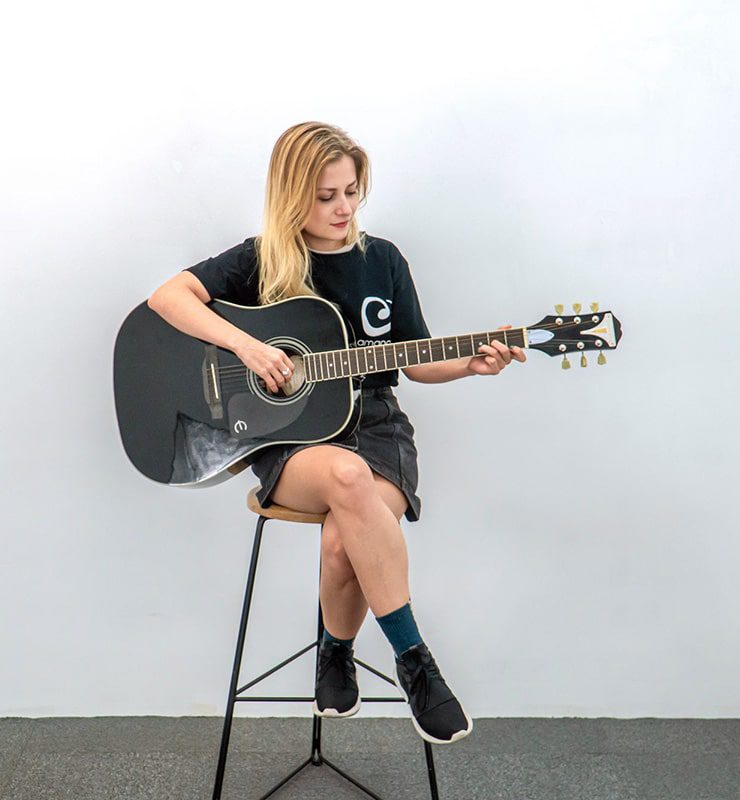
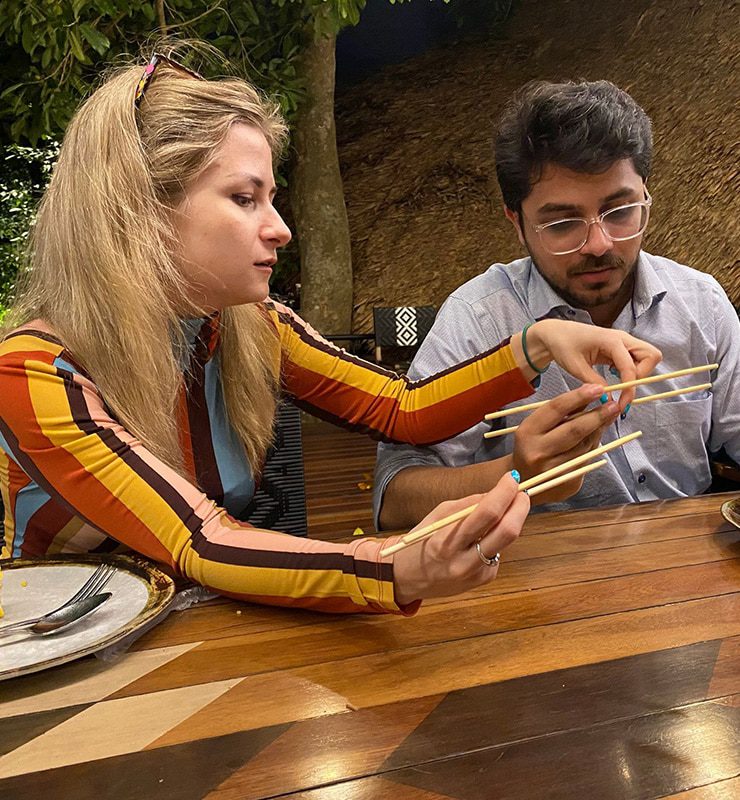
Nadiia, how has Yodo1 empowered you?
Working at Yodo1 helped me keep moving despite the difficult war situation back home and inspired me to grow myself, my skills, and my team.
Receiving constant support from my team has been almost life-saving for me during such a difficult time. But the cherry on top is when I hear testimonials from our developers and receive sincere thanks and positive feedback directly from them. Being in a role where I can directly help developers empowers me greatly!
What advice would you give to women wanting to enter the gaming industry?
With focus and determination, nothing can stop you from succeeding, so keep moving towards your goals!
Ready to grow with us? Check out our Careers page!
Latest Blog Posts


Bumblebee joins the battle for a second Puzzles & Survival x Transformers event


Viking Rise x Vikings: Valhalla Event 4 – The Grand Finale of an Epic IP Saga


Wing Fighter x TRANSFORMERS – A Battle for the Ages!


Dragonheir: Silent Gods x Dungeons & Dragons – Enter the Third Phase of Epic Collaboration!


TRANSFORMERS bots and Puzzles & Survival Game Unite to Combat a Massive Invasion!


Yodo1 Gathers China’s Top Mobile Gaming Leaders to Explore Global Brand Partnerships in 2025
IP Licensing

How Fortnite Integrates IPs to Unlock New Levels of Growth
01.03.2023
•
5 mins read
How Fortnite Integrates IPs to Unlock New Levels of Growth
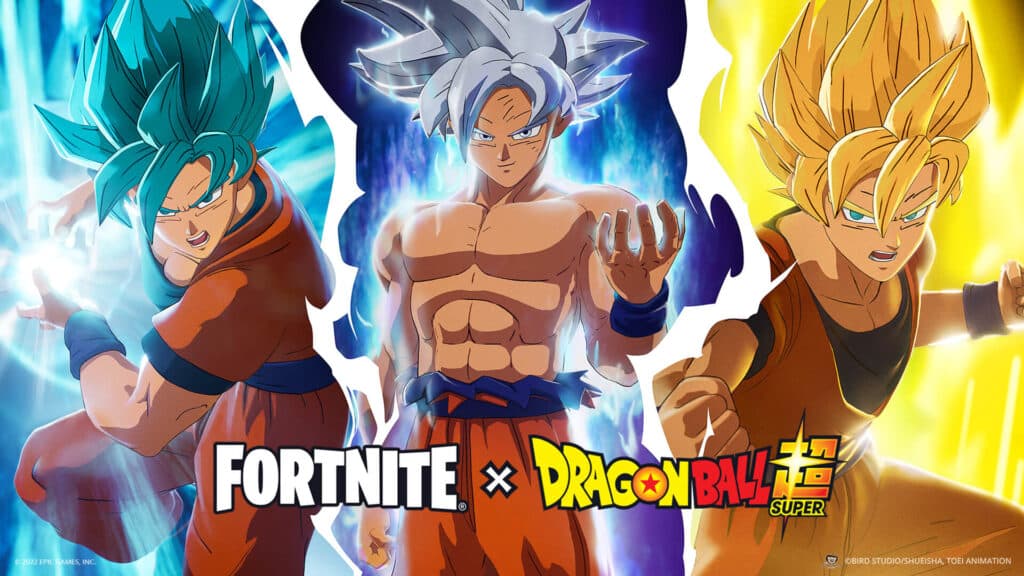
When it comes to integrating major brands into games, it’s hard to find a better example than Fortnite. The team over at Epic are experts at working with well-known IPs, and integrating those brands into the game in exciting ways that attract new players, engages the existing community, and keeps those retention levels up! But what is it exactly that makes them so successful at this, and what are some of the key lessons you can learn and apply to grow your game?
Let’s dive in and find out.
What are IP integrations anyway?
Brand events within games are a unique way to experience original collaborations between some of the biggest names in the entertainment industry. Musical artists, characters from a hit TV show or blockbuster movie: everyone’s getting in on the action. And it’s easy to see why these events are a perfect opportunity to bring together different fan bases and expand the reach of the IPs and the games involved.
Exclusive collaborations like these have proven a hit with gamers. The integration of recognizable brands, actors, or characters not only enhances the overall gaming experience, but also creates a limited-time opportunity where players collect exclusive items that are only available for a short period.
Unlocking the secrets to Fortnite's content integration
As mobile gaming continues to evolve, the way in which games integrate content has become increasingly important. And there's no better example of this than Epic Games’ epic game, Fortnite. Over half of their players are between the ages of 18-24, and they’ve figured out how to keep their audience engaged with a variety of integrations that go beyond the typical skins.
So, how does Fortnite do it? Let's take a closer look:
Audience fit:
They know their player base well, and not just what they like but the sheer volume, how vast their reach is, and the key differences between players in various parts of the world. A majority of these players are young, used to digesting media and content quickly and constantly—Fortnite understands this and packages their collaborations to appeal to them.
For instance, the trailer for Fortnite Chapter 4 Season 1 featuring Mr. Beast zipping through outer space created a storm of hype among Mr. Beast's 100 million+ fans, creating a huge amount of anticipation around the new chapter.
Insight: Think of potential players and strategic IP integrations like a Venn diagram. The large intersection between "gamers" and "Mr. Beast fans" made that collaboration a brilliant move. In order to find the perfect fit for your brand integrations, it's important to understand your player base and what appeals to them.

Constant engagement:
Fortnite engages its audience by regularly dropping hints about upcoming content, adding to the anticipation and keeping players curious and coming back. Some events have been announced just a day before launch, following the trend in music over the past two years where artists don't announce their new songs/albums far in advance, but instead drop a tweet just a day or two before the launch. This feeling of immediacy and excitement is part and parcel of the whole experience.
Going back to our earlier example, that trailer for Chapter 4 featuring Mr. Beast dropped on December 3, 2022, only a day before the start of the new season.
Insight: The volume of content young gamers can consume verges on incomprehensible. That means a week is an eternity. Keep that in mind as you build hype around fresh content releases.
Broad appeal:
Fortnite’s collaborations span a broad range of genres and brands, ensuring they appeal to as wide an audience as possible. They might team up with key figures in fashion, influencers, anime, film, TV or sports, in addition to collaborations with IPs from the likes of Marvel, Star Wars, and DC. These integrations are so numerous and come at such speed that even if a particular one is not of interest to a player, they’ll still check in again soon because they know there’s always something new on the horizon that they won’t want to miss.
Insight: It’s not possible for a given IP collaboration to resonate with all players. While quality is important, quantity shouldn’t be disregarded. If the goal is to appeal to more players, skins and events may make a bigger splash than a deep storyline integration.
Fortnite x Dragon Ball Z
One of Fortnite’s many integration hits was their recent collaboration with Dragon Ball Z. With the overlap between the anime and gaming audiences, putting the two together via an IP integration was a match made in heaven. A study conducted by media distribution service Crunchyroll showed that 90% of anime consumers also play games, and as a result the integration of anime brands in games is becoming more mainstream.
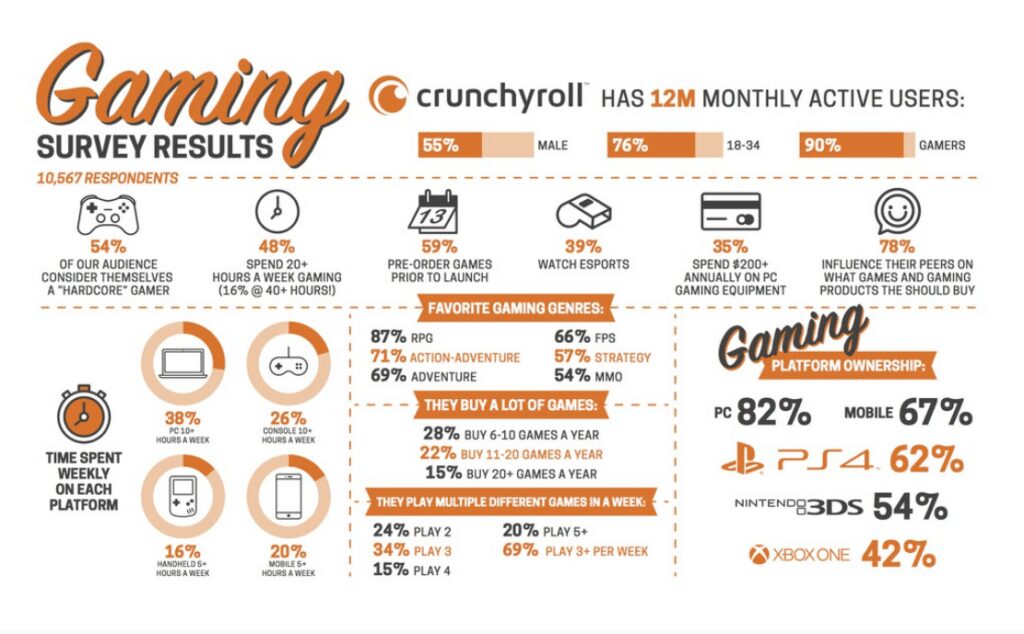
Dragon Ball Z fits in with Fortnite’s demographic perfectly: the mega-successful anime series has both a strong nostalgia factor for people in their 20s to 40s, and, as the franchise is still ongoing with new movies and manga series being released, it continues to attract new fans.
The integration between Fortnite and Dragon Ball Z had two distinct events: the first, launched on August 16, 2022, was tied with the US film release of Dragon Ball Super: Super Hero. You could watch the movie’s trailer in the event, and even discover some new episodes as a part of a chest. The characters skins Goku, Vegeta, Bulma, and Beerus featured as well.
The second event dropped on January 31, 2023, after being announced only the day before. This time, players could acquire skins of the movie’s main characters, Piccolo and Gohan.
The Dragon Ball Z example above is only one example—in November 2022, Fortnite held a collaboration with Naruto, the most popular anime in the US, followed by the August 2022 Dragon Ball Z event outlined above. They followed that up in December with My Hero Academia in December, for a staggering total of three anime integrations alone in the space of just one year.
So, what can we learn from this approach? What’s the secret to successful brand integration? Identify the sweet spot where your game's audience intersects with fans of a particular IP. Create exclusive, buzz-worthy events that tap into the FOMO of players and offer something new (ideally driven by a deep emotion, like nostalgia). Get creative and strike a balance that benefits both parties, bringing in fresh players to your game and giving the IP a boost—a true win-win. Rinse and repeat.
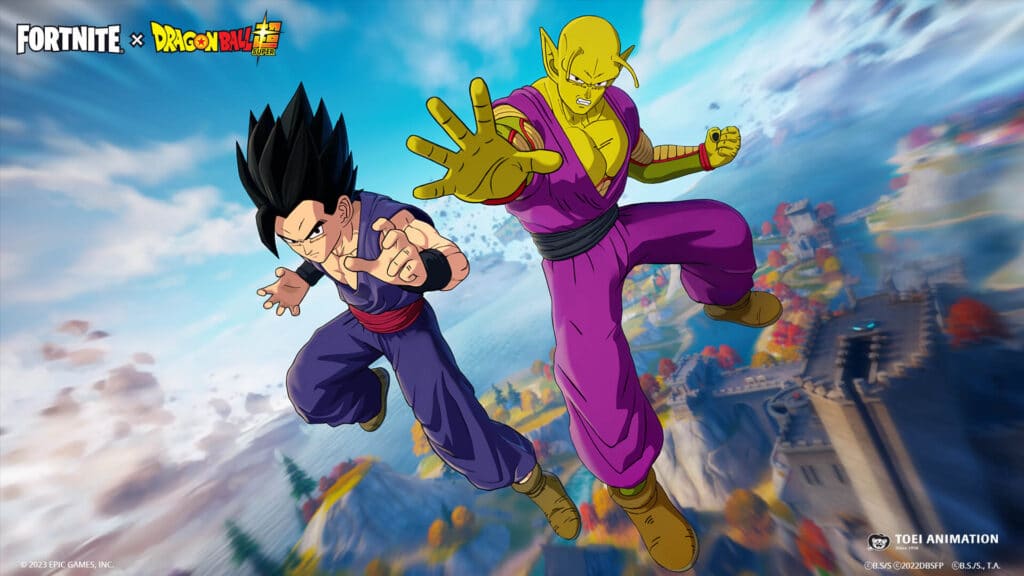
Is your game ready for an IP integration?
From a brand perspective, this is an exciting new landscape for game studios and developers, offering an opportunity for not just the big hitters like Fortnite, but established, proven studios of all sizes.
IP holders want to reach players of all ages and engage with them, and despite what you might think, many are open to a variety of collaborations. Some might be looking to reinvigorate their brand or test a new IP across a variety of markets, and that’s an opportunity.
What level does a studio need to be at to consider IP integrations? First of all, you should have a solid and profitable game with active LiveOps that allow for this sort of crossover. There needs to be a natural path to welcome the IP into your game so it can smoothly fit into your game's roadmap.That ultimately means planning everything far in advance (including deal negotiations), so that you can take full advantage of the integration.
With the rise of mobile gaming, games are now coming from a place of more strength and negotiation power; they can even become their own IPs and license them out once they reach a certain level of success. This can bring exciting new possibilities for both game developers, players, and the IPs, a win-win-win.
Ready to jump in?
For both IP holders and game developers/publishers, IP integration offers a chance to bring new and exciting content to a game, promoting the IP while engaging loyal players and bringing in new ones. It’s simple–but there’s a lot involved: the key to successful IP integration in the gaming world is understanding the needs and wants of both parties involved and then creating an event that stands out—unique, risk-taking, and hopefully gets people talking—resulting in all sides not just recouping their investment but increasing their bottom line overall.
In a recent conversation, the Yodo1 Brands team discussed just this topic, and shared some insights about Fortnite brand integrations, including the big picture landscape of IP in mobile gaming.
Check out the conversation here:
https://www.youtube.com/watch?v=D8Ibu9RE4hc
“We can make the process easier and less intimidating for developers. With experience of working with IP holders from anime to Hollywood—and as game publishers ourselves, we know the ins and outs of developing and understand both sides of the coin.”
- Fil Robinson (Yodo1 IP Licensing Manager)
“We are in touch with licensors on a number of deals all the time, so we’re familiar with the people, terms and processes: working with Yodo1 can give a developer access to all those IP holders. Many are open to collaborations, but don’t have the time to go looking for games, and instead respond more reactively to opportunities, so they don’t always find their perfect match. We have a huge network of studios all over the world and we know which IPs they’re interested in and their budget, as well as what kind of games the IPs are looking for, saving you time and effort.”
- Marina Espin (Yodo1 Head of Strategic partnerships)
If you’re curious, but don’t know where to begin, happily, at Yodo1, we have a wealth of experience in positioning and integrating IPs to maximize their impact on a game. We know the ins and outs, and we're here to help. In just one example, we recently worked with game studio 37Games to organize and set up their popular Puzzles and Survival x The Walking Dead collaboration.
Don't miss out on the opportunity to take your game to the next level—get in touch to learn more about Brands in Games from Yodo1 and what it could mean for you.
Latest Blog Posts


Bumblebee joins the battle for a second Puzzles & Survival x Transformers event


Viking Rise x Vikings: Valhalla Event 4 – The Grand Finale of an Epic IP Saga


Wing Fighter x TRANSFORMERS – A Battle for the Ages!


Dragonheir: Silent Gods x Dungeons & Dragons – Enter the Third Phase of Epic Collaboration!


TRANSFORMERS bots and Puzzles & Survival Game Unite to Combat a Massive Invasion!


Yodo1 Gathers China’s Top Mobile Gaming Leaders to Explore Global Brand Partnerships in 2025
Game Growth

How to Invest in Your Games
01.03.2023
•
5 mins read
How to Invest in Your Games
How To Make Smart Investments That Will Grow Your Mobile Game Faster

Are you looking for ways to boost your mobile game's growth and success? With so much pressure in today's competitive gaming scene, it can be hard to decide how best to invest all of the resources at your disposal. But don't worry, you're not alone!
We've worked with hundreds of successful mobile game studios, indie developers, and creators over the last decade-plus who have achieved amazing results by making smart investments in their games that enabled them to grow their projects exponentially, and much faster than they ever could have dreamed.
In today's blog post, we'll explore a few insider tips and tricks to help you make similar savvy decisions with whatever resources you have and jumpstart your mobile game's growth!
The Fun Factor: A Rock-Solid Core
When investing in your mobile game, it's crucial to prioritize the fun factor above all else. A game's success is highly dependent on its ability to engage players with enjoyable gameplay. Neglecting this factor can result in a lack of player interest, regardless of marketing efforts. So... what do we mean by focusing on the fun factor when investing in your game? It means allocating time, money, and people, into the planning and market research phase to ensure that unique and entertaining gameplay elements are identified and included in the game. In other words, investing in the fun factor from the outset will lead to long-term success.
GROWTH TIP: Don't forget to regularly release new content and experiment while preserving the core gameplay that your players love.
https://www.youtube.com/watch?v=mP51adcK4Mc
A Growth Mindset is Key
Many developers stretch themselves (and their teams) too thin by wearing too many hats. The true key to success is understanding your limits, embracing a growth mindset, and learning to delegate to others with specialized expertise.
When budgeting and allocating resources, experiment with different options to see what works and, regardless of the outcome, see them as opportunities to learn and grow as an entrepreneur. Constant testing and iteration can be a tremendous wellspring of insights about your players and strategies for growing your game.
On the other side of the coin, it’s also important to avoid falling into the dreaded sunk cost fallacy. With limited resources and time, no developer should be spinning their wheels on stuff that simply isn’t working or generating insights. To avoid this, always identify what you’re trying to learn or gain from any experiments you run. Measure results against those goals continuously and be brave enough to pull the plug on an idea or activity that isn’t generating fruit.
GROWTH TIP: Don't be afraid to collaborate with other developers or outsource tasks like asset creation, user acquisition, and monetization.
Time to Scale
With a fun game and a growth mindset, it's time to take action. Create a roadmap of exciting content that your core player base will love, and make sure to include new things you want to test. Look outside your team for opportunities to help you scale and reach new heights.
Case in Point: Nordicandia
Have you heard of Nordicandia? They're a perfect example.
This 2D dungeon explorer inspired by Diablo has a simple, straightforward design that naturally brings players together. The game saw tremendous growth by investing time and effort in creating the right channels for player engagement and connection, but they were looking for help with their monetization strategy. By integrating their game with MAS, Yodo1’s AI monetization platform, the developer was able to grow their revenue, freeing them up to focus on bringing out fresh content for their players. Today, the game has a thriving community and player base with a clearly defined path for growth.


Connections Open Doors
Don't underestimate the power of networking with other developers, investors, and publishers. They may have valuable insights and feedback that can help you reach new heights.
Each game is on a unique journey, and we're here to support you every step of the way. Want to learn more about investing in your game to achieve growth? Book a discovery call with a Yodo1 Game Growth Expert to learn more about how we can help simplify your mobile game growth strategy.
Latest Blog Posts


Bumblebee joins the battle for a second Puzzles & Survival x Transformers event


Viking Rise x Vikings: Valhalla Event 4 – The Grand Finale of an Epic IP Saga


Wing Fighter x TRANSFORMERS – A Battle for the Ages!


Dragonheir: Silent Gods x Dungeons & Dragons – Enter the Third Phase of Epic Collaboration!


TRANSFORMERS bots and Puzzles & Survival Game Unite to Combat a Massive Invasion!


Yodo1 Gathers China’s Top Mobile Gaming Leaders to Explore Global Brand Partnerships in 2025
Game Growth
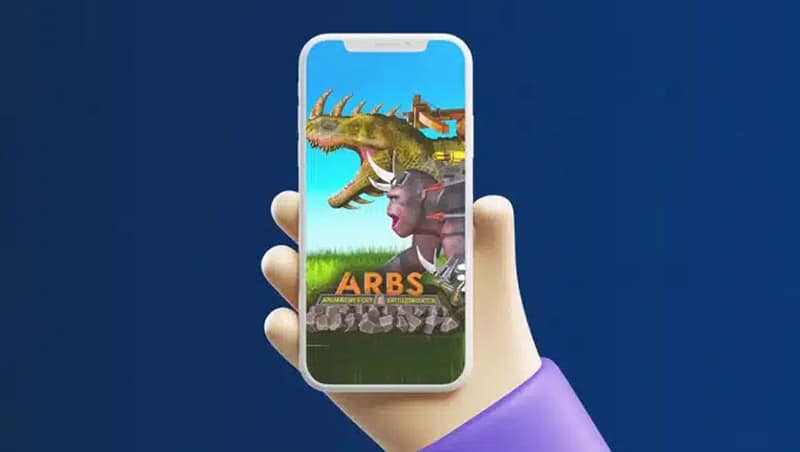
Secrets of UA: Your Game's Path to Success
14.12.2022
•
5 mins read
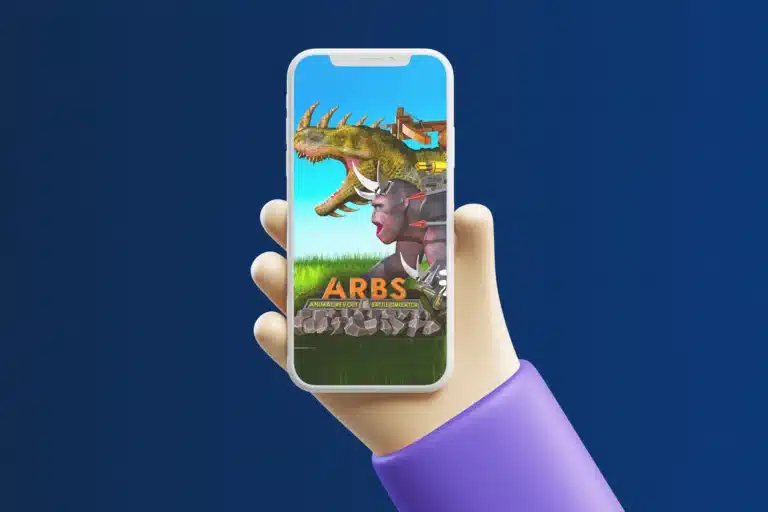
Secrets of UA: Your Game's Path to Success
This is the final installment of our four-part feature on the multi-platform crossover hit, Animal Revolt Battle Simulator. In part three, discover how VDimension Studios increased ARBS' player base by 50x—and learn more in part one and part two!
If you’re reading this, you probably know that User Acquisition (or UA) is a data-driven approach to marketing, specifically designed to attract and engage more users for your game or app. Today, we’ll take a deeper dive to explore some of the things you can do right now to help you get the most out of your next UA campaign.
So… you've launched a game, and now you’re starting to get some traction and solid revenue is rolling in. This is where the next critical stage of growth comes into play: maximizing your revenue and finding creative ways you attract more users!
Never Too Early to Get Started
A new game can benefit from UA right from the jump. If you believe your game has a unique selling point compared to its peers you can prove it with data and a basic UA test. Start with a week or two of ads on Google, Facebook or whichever channel best fits your game. Acquire enough users so you can get a 3-5000 DAU to really get the metrics you need.
What are you looking to learn from this test? How do you get a perspective on what you should aim for? How do you know what a realistic yet ambitious goal is for your game? Research the market—Appmagic is a great tool for this—to see what developers and publishers big and small are doing: screenshots, icons, subtitles, those small things can show you easy and immediate angles for potential areas for improvement in your game.
If you have in-game ads, your focus should be on impressions per DAU and your eCPM. The key is finding a way to balance these with retention to ensure a satisfying game experience that will keep your players coming back and increase your LTV.
If your game uses mostly in-app purchases, you should focus on the new user pay rate and average revenue for paying users and monitor your ANR and crash rate daily. Have a list of metrics and facts you’re looking for—you want to extract as much value as possible from your investment.
Knowing When to Invest in UA
Once you’ve reached/hit a few thousand DAU from ASO and other organic marketing, that might be the time to invest in a two week ad series and see how that impacts your LTV.
Your users’ lifetime value (LTV)—or how much revenue you will receive from a user during the whole time they play your game, is based on your average revenue per active user and your retention. These are important figures to track and analyze so you know what your overall investment per user is worth.
Do your research and find the eCPI for your game genre–this can show you what to invest money in and where to experiment. Have benchmarks, a hypothesis you’re looking to prove or disprove.
MMP, or mobile measurement platforms, are your first step, and only a few allow you to configure your own metrics, though you won’t have full access to all of your data. But an MMP will allow you to see the actual facts.
So the first and arguably the most important step is choosing an MMP to partner with, integrate their UA, start testing, and then you can begin with ad networks.
“The most important UA metrics are your retention rates and ARPDAU,” says Nadiia Marchynska, Head of Game Marketing & UA at Yodo1. “If you have in-app purchases, what is the pay rate? And for each paying user, what are you earning?”
And don’t forget, these figures can be very different depending on if you have a hyper casual game with much higher churn as opposed to a game with fewer users who play for much longer—that’s why you need to have researched the standard for your game genre to set accurate goal expectations. Your game genre determines your monetization strategy
Getting started on all this can be one of the biggest bottlenecks for gaming studios, who often lack both time and specific skills.
Standout Creative Assets are Key
You need good, solid creatives to run a successful campaign, followed up by a very solid testing plan to see which ones work. It’s an iterative process of creating, testing, judging the results, and repeating to get the best possible results—continuing ongoing results will require new content, if you stick with the same old stuff, your growth will plateau.
Sure, you could get a freelancer or someone in-house who’s already got too much on their plate to do the creatives for you, but without specific experience, it’s not going to be as impactful as it could be, and will ultimately not be the best use of your resources. The market changes and fluctuates, so you have to monitor your ROI constantly, you can’t just set it and forget it.
“Performance benchmarks for the ad creatives in your genre are also crucial to follow up on–that’s how you can judge your game’s marketability,” continues Nadiia. “It’s evolving so much that now you can even give players a chance to interact with your game via playable ads and try it out before they even install it. It’s a good tool to beta test future ideas, too.”
“So glad I found Yodo1! It’s such a relief having them take care of user acquisition, so I can focus on what's most important: making Animal Revolt Battle Simulator a successful multi-platform gaming experience.” Lam Trinh Hoang,
Founder, VDimension Studios
Unlocking a Full-Stack UA Partner
If you find the scale and logistics of all this challenging, you’re not alone. Even with the best of intentions, the deck is often stacked against flying solo. For example, a newly set up UA account with no history will find it nearly impossible to get support when they need it, and some ad networks don’t even unlock all their features for new advertisers, unless and until they’ve reached a certain spending level, making it nearly impossible to run optimal, successful campaigns.
Even something as simple as paying for their services can require jumping through many hoops, with different payment methods and restrictions from country to country, and so on, meaning that when something is successful, the window may have passed before you are able to scale it up. All these factors combine to make it a real challenge for those who want to dive in.
These are trends we began seeing with many of our ad monetization partners using our MAS service, leading us to begin helping them with our own in-house team and accounts, developing into the full-fledged UA service that we are now offering to mobile game developers worldwide.
This quality of full-service UA is unique in the market: from setting up the MMP, integration, QA/QC, access to all add networks, detailed testing, planning and projections, ROI, and budget planning. From technical to top-level planning, creative production and testing, and optimization, all the way through, Yodo1’s comprehensive UA service gives you the benefit of our longstanding accounts, as well as our years of experience, automated for optimal results.
The result is data-driven optimization and smart UA campaigns taken off your shoulders, allowing you to try this out without building an additional team in-house.
How has this worked in the real world?
In Animal Revolt Battle Simulator (ARBS), we went from starting with no UA, to, by the fifth month, increasing the game’s revenue sevenfold, and we are continuing to scale it up.
Scale Your UA with a Dedicated Partner
At Yodo1, we’ve spent more than a decade helping mobile game studios simplify their growth. We've run thousands of ROI-positive UA campaigns for iconic titles—like Crossy Road, Rodeo Stampede, Transformers: Earth Wars, and more—amassing more than 1.5 billion players around the world. And now we’re making it easy for you to grow your games into chart-topping hits, too
We want you to be able to focus on doing what you love: making cool games, instead of having to invest your precious time and resources becoming a UA expert. If you’re already using MAS, you can choose to reinvest your ad income directly from that into your UA campaigns, and you’re already set up in a way that optimizes the effects of running a UA campaign.
If you’re interested in learning more about our full-stack UA service, set up a call today with a member of our team—we’re all over the world, so there’s no need to worry about time zones. We can set up testing and validation, and from there give you a detailed projection on what to expect from the service.
Latest Blog Posts


Bumblebee joins the battle for a second Puzzles & Survival x Transformers event


Viking Rise x Vikings: Valhalla Event 4 – The Grand Finale of an Epic IP Saga


Wing Fighter x TRANSFORMERS – A Battle for the Ages!


Dragonheir: Silent Gods x Dungeons & Dragons – Enter the Third Phase of Epic Collaboration!


TRANSFORMERS bots and Puzzles & Survival Game Unite to Combat a Massive Invasion!


Yodo1 Gathers China’s Top Mobile Gaming Leaders to Explore Global Brand Partnerships in 2025
Culture

10 Tech Tools to Make Work-From-Anywhere a Breeze!
11.08.2022
•
5 mins read

10 Tech Tools to Make Work-From-Anywhere a Breeze!
When Yodo1 transitioned to a fully work-from-anywhere (WFA) company in December 2020 it became immediately clear we needed to up our collaboration game by finding and using the best tools to promote long-distance co-working.
A year and a half on, here’s a quick look at ten tools that enable us to collaborate and be more productive than ever in 2022. All are free to try out or for light use, with premium options for heavy users.
Project Creation and Management Tools
Collaboration & Notes: Notion.so
Released: 2018
Why we love it: It’s Evernote meets Trello meets mini-WordPress. There’s seemingly no end to the ways you can adapt this tool to make your work life easier. It’s excellent both for personal organization and project management. We love to use it as a space where every team can work “in the sunshine” thus ensuring transparency and accountability.
Data & Automation: Airtable.com
Released: 2012
Why we love it: Airtable is a powerful database tool that can be thought of as spreadsheets meets Trello with automation capabilities. It’s easy to see where you are across multiple projects at a glance, keeping all the balls rolling and the statuses up-to-date.
Flowcharts & Wireframes: Figma.com
Released: 2016
Why we love it: Great way to quickly design, build, and export files for prototyping websites and mobile apps. As a bonus, check out Figjam, a fast and whimsical online whiteboard for sticky notes and ideas to supercharge your team brainstorming sessions.
Project Management: Jira.com
Released: 2002
Why we love it: Jira is still the go-to platform for project management, making it a popular tool across a wide range of companies. While the younger Airtable and Notion platforms do have some similar project management features, our tech leaders still swear by Jira.
Staying in Touch: Videos, Calls, & Scheduling
Everything in One Place: Microsoft Teams & Office.com
Released: 2017
Why we love it: Recently, Yodo1 transitioned from having chats, calls, email, and scheduling spread across a myriad of platforms to using Microsoft Outlook and Teams.
We’re still exploring various add-ons and best practices but so far what we like best is having everything in one place and being able to easily see who’s available when.
Bonus: We love the GIFs in Teams chat as well as “Together Mode” in calls.
Recording & Sharing Videos: Loom.com
Released: 2016
Why we love it: Quick and easy way to record and share videos of yourself or your screen. It’s particularly useful for helping those in different time zones to get rid of endless PowerPoint slide decks and communicate ideas more effectively. The free version allows videos up to five minutes long.
Appointment Scheduling: Calendly.com
Released: 2013
Why we love it: Make it easy for others–both in or out of your organization–to book time on your calendar based on your availability. Calendly now also includes meeting polls, where multiple participants can vote on the best time for a call.
Content Creation
Slide Decks: Pitch.com
Released: 2020
Why we love it: This relatively new tool is a simple, interactive, and powerful alternative to Canva, Google Slides, or PowerPoint.
Graphic Design: Canva.com
Released: 2013
Why we love it: Great for editing and creating visual content. It’s the go-to platform many of our staff use to design slides, posters and many more projects–get your work done in just minutes with the thousands of ready-made templates and fun graphics that are available. It’s also collaborative and easy to learn.
Stock Photography: Unsplash.com
Released: 2013
Why we love it: Access to thousands of high-quality images available for free use.
And did you know...you can even access Unsplash's photo library from directly within Notion—sweet tip, right?!
What tools do you use for remote work? Tell us about it on LinkedIn–and if you’re interested to join the ranks of Yodies working remotely from over 30 countries check out our open positions today!
Latest Blog Posts


Bumblebee joins the battle for a second Puzzles & Survival x Transformers event


Viking Rise x Vikings: Valhalla Event 4 – The Grand Finale of an Epic IP Saga


Wing Fighter x TRANSFORMERS – A Battle for the Ages!


Dragonheir: Silent Gods x Dungeons & Dragons – Enter the Third Phase of Epic Collaboration!


TRANSFORMERS bots and Puzzles & Survival Game Unite to Combat a Massive Invasion!


Yodo1 Gathers China’s Top Mobile Gaming Leaders to Explore Global Brand Partnerships in 2025
Get Updates From Yodo 1




